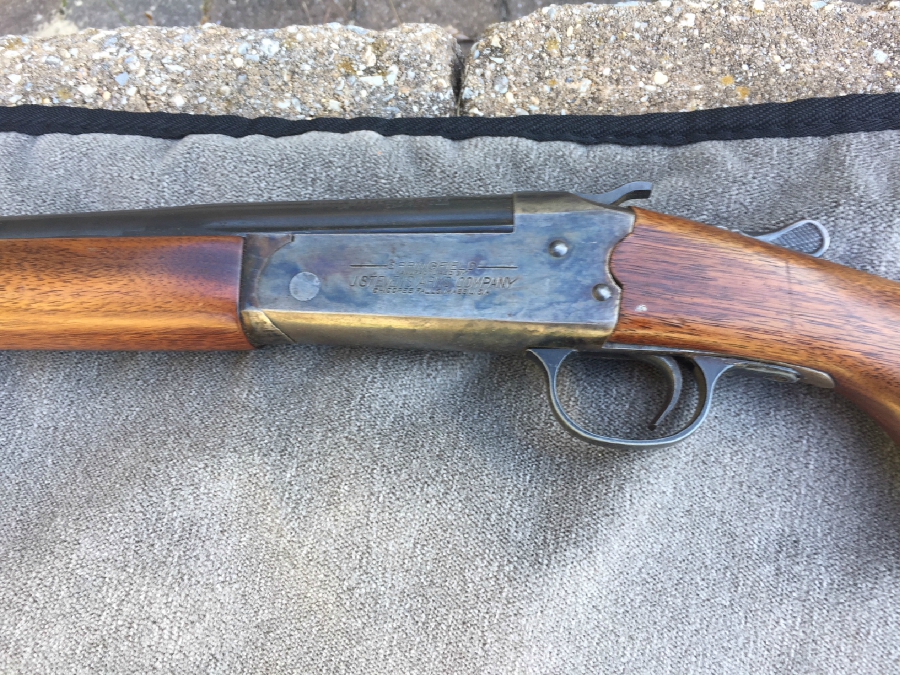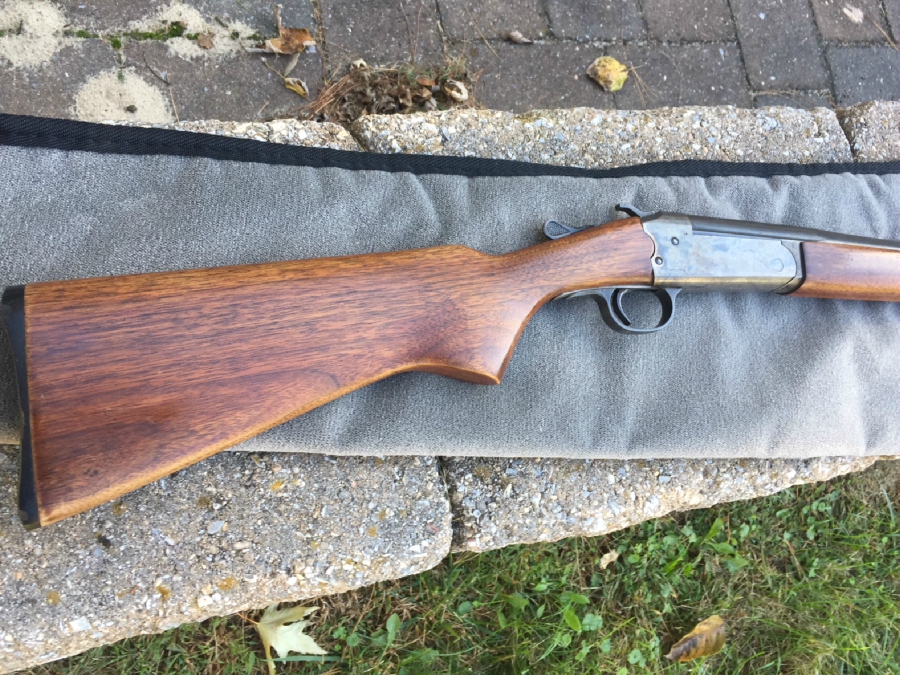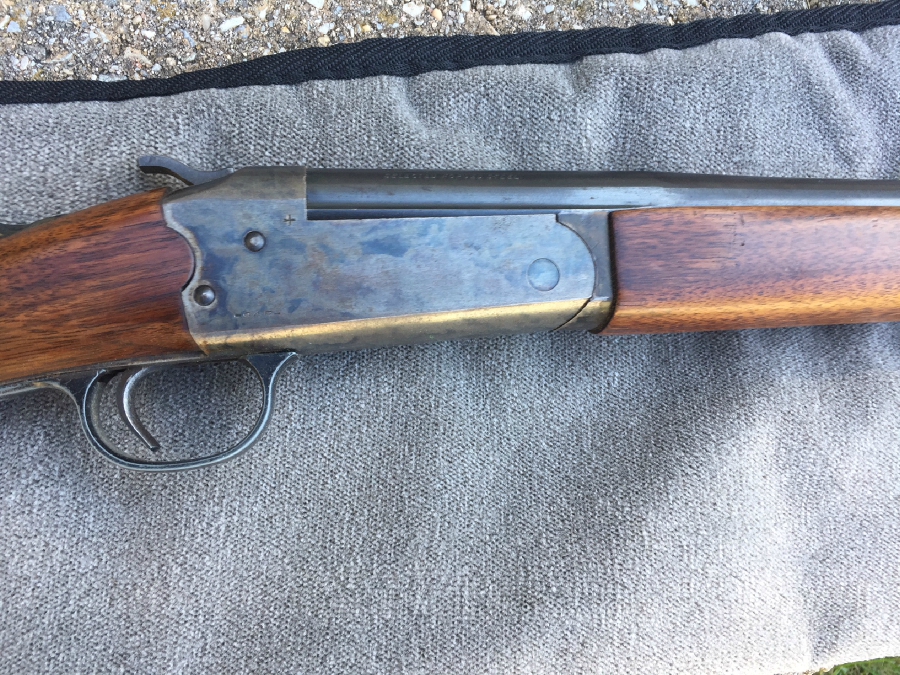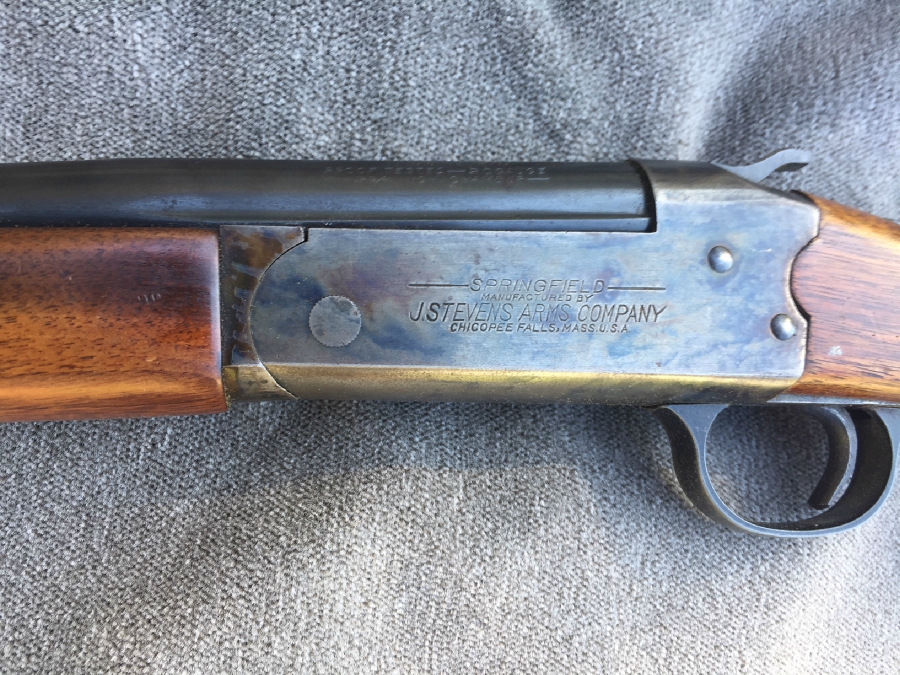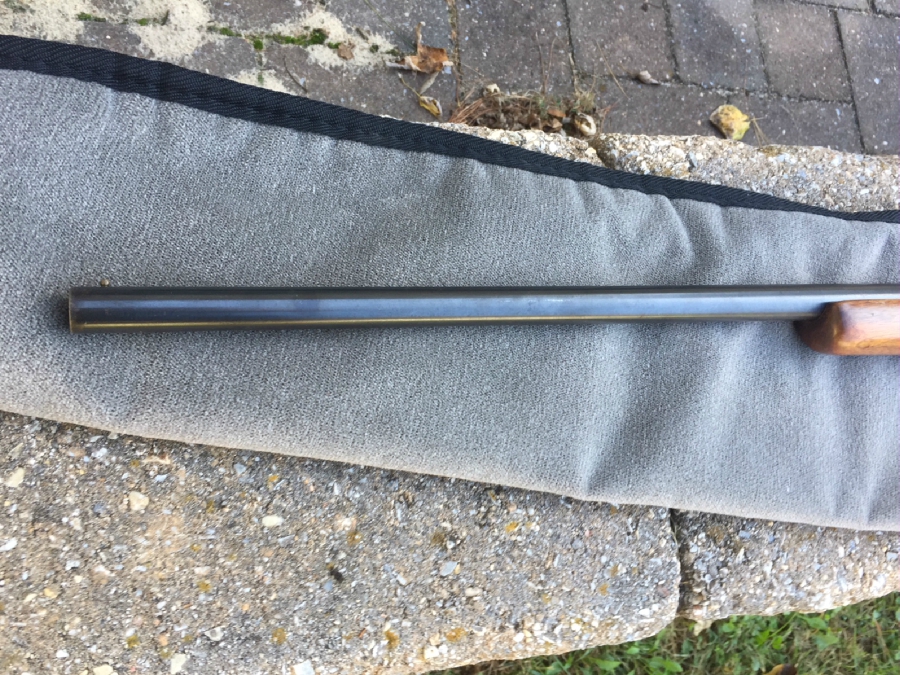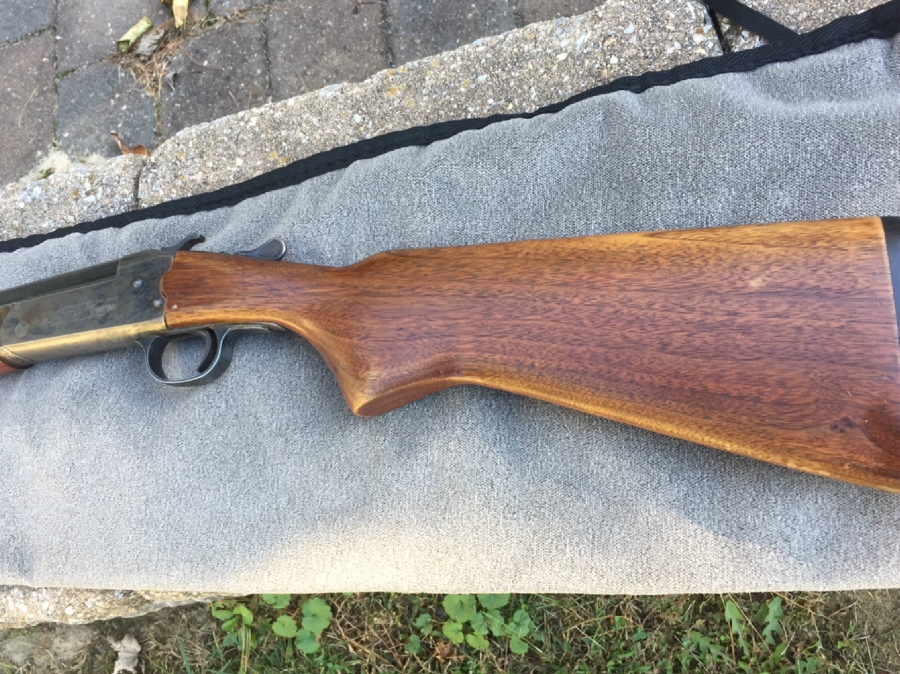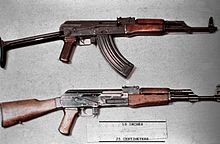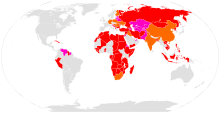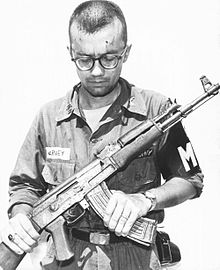Category: All About Guns



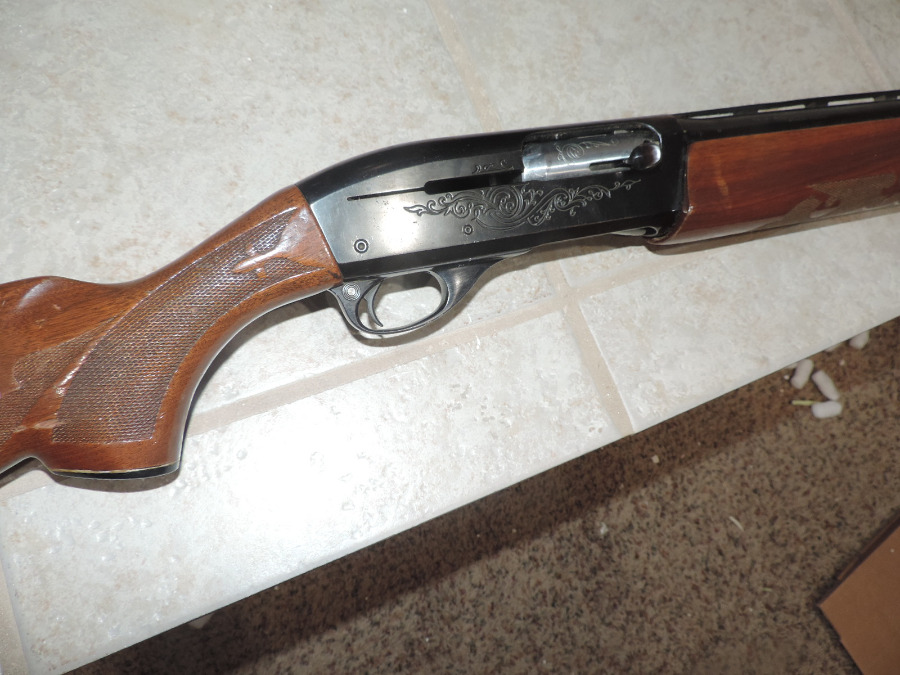
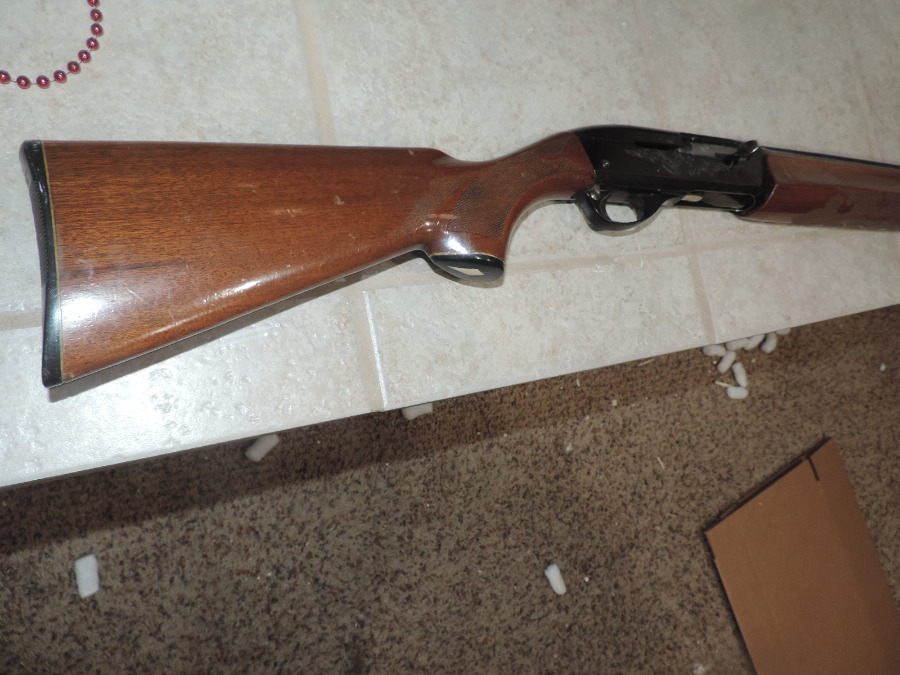
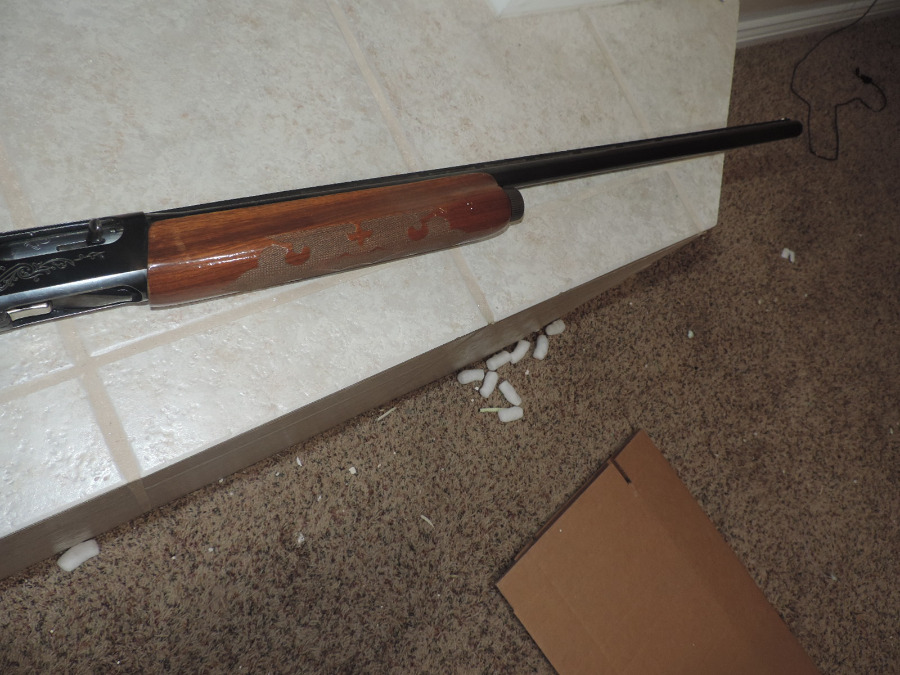
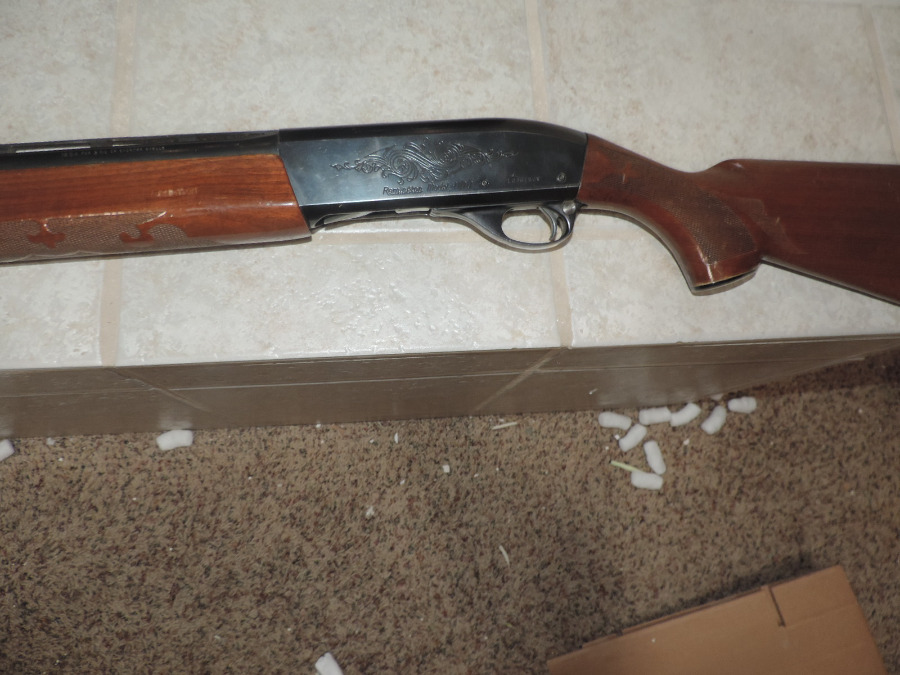
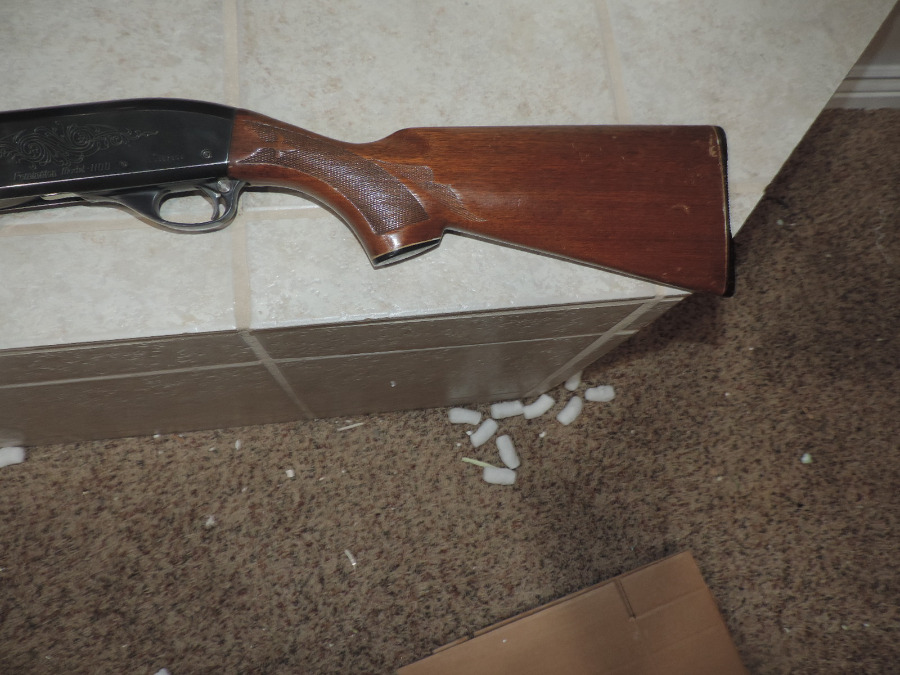
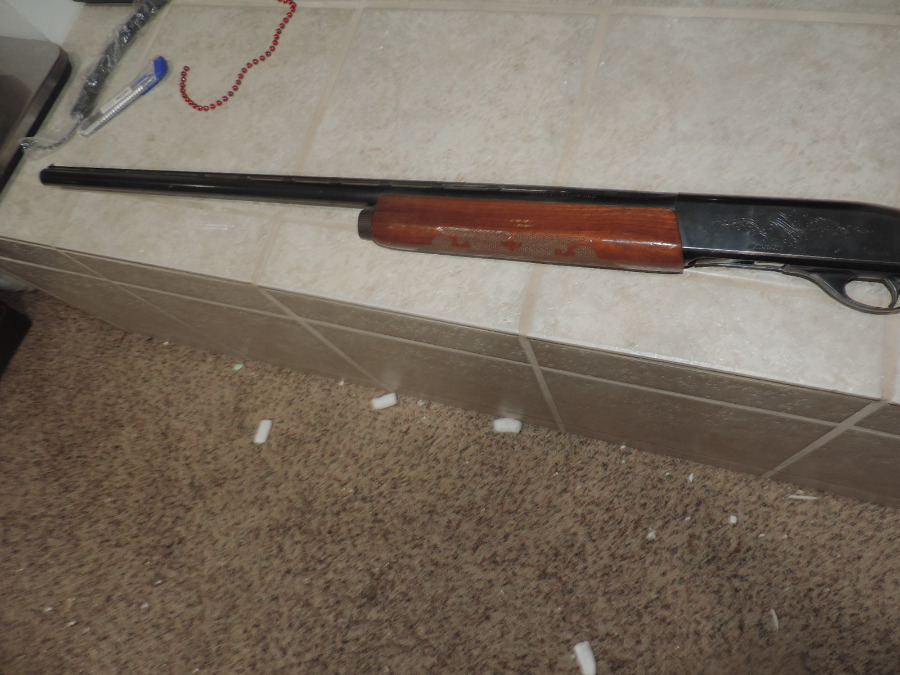
Now I own one of these fine scatterguns. My only advice is that you get a fitted recoil pad put on by a gunsmith that knows what they are doing.
Especially if you are recoil sensitive like me. Even though as a gas operated shotgun its recoil is not as bad as a pump or double barrel shotgun is. Just saying that’s all! Grumpy
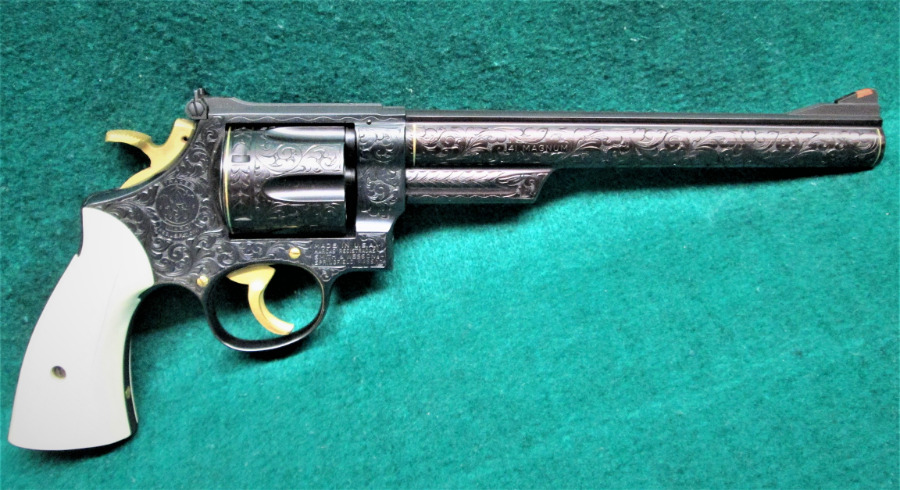
This is an example of some gunsmith who really knew what they were doing!
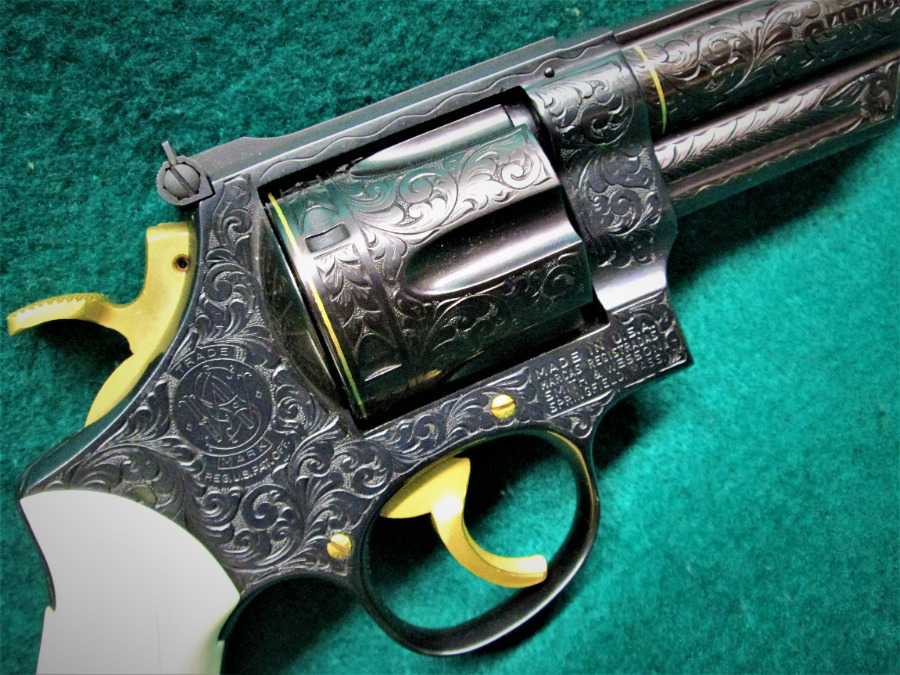
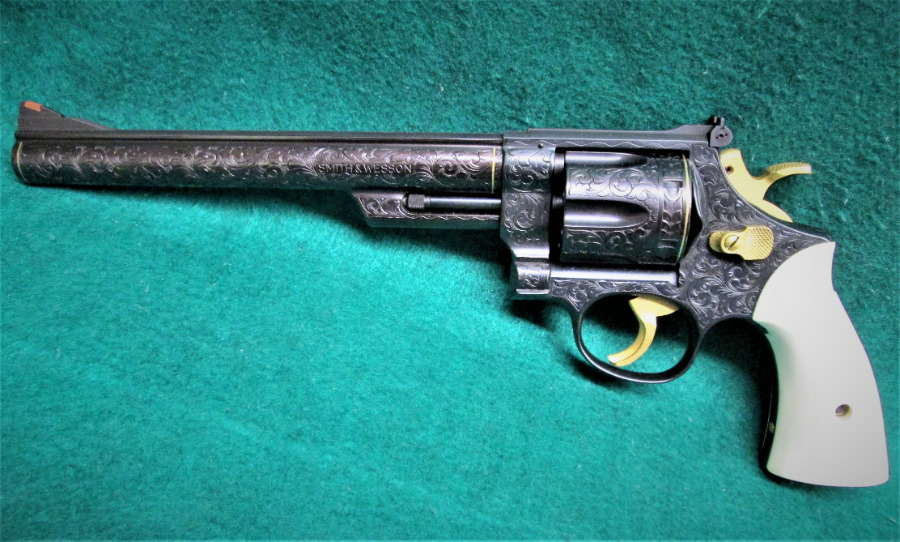

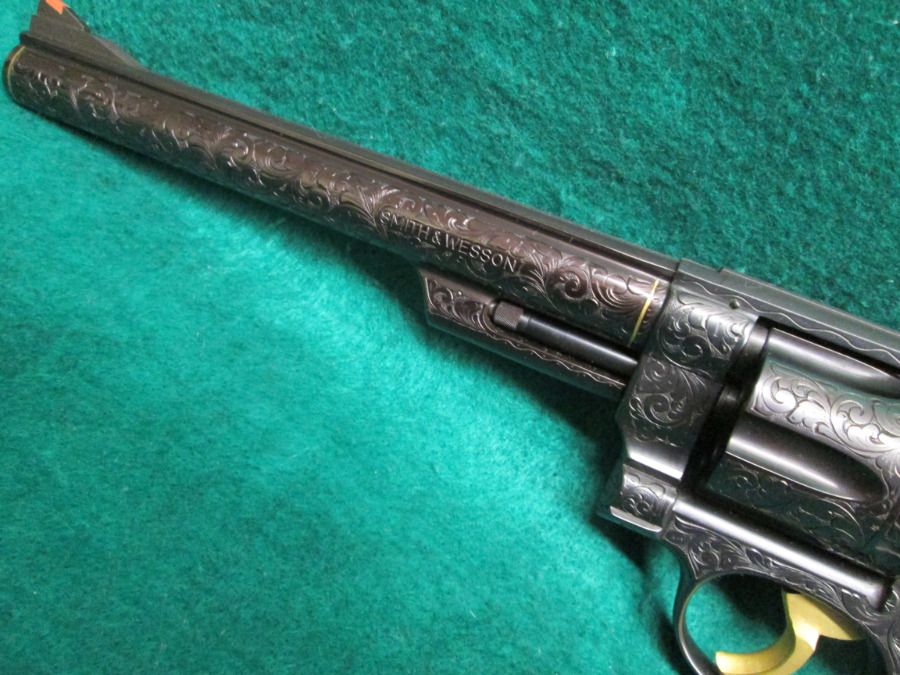
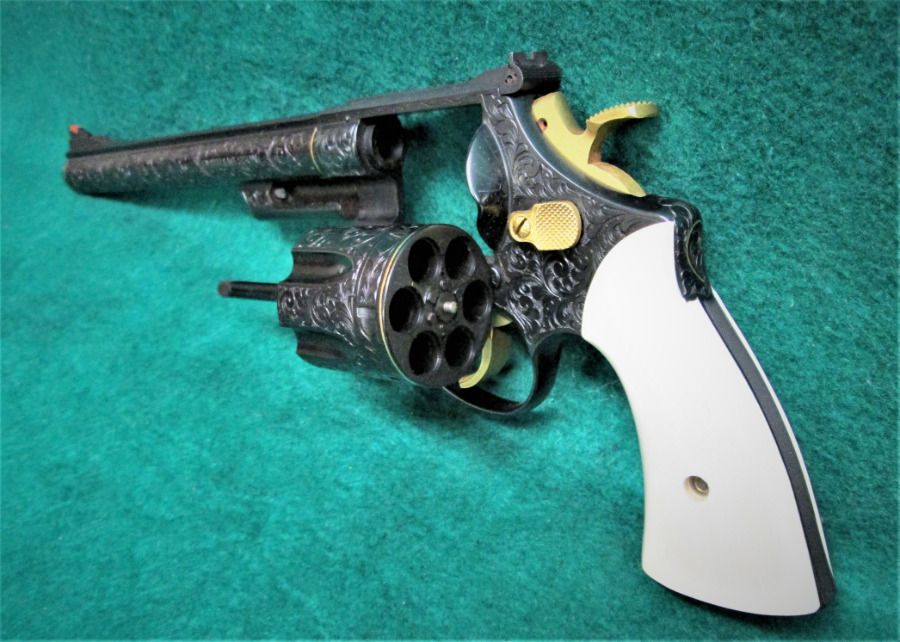
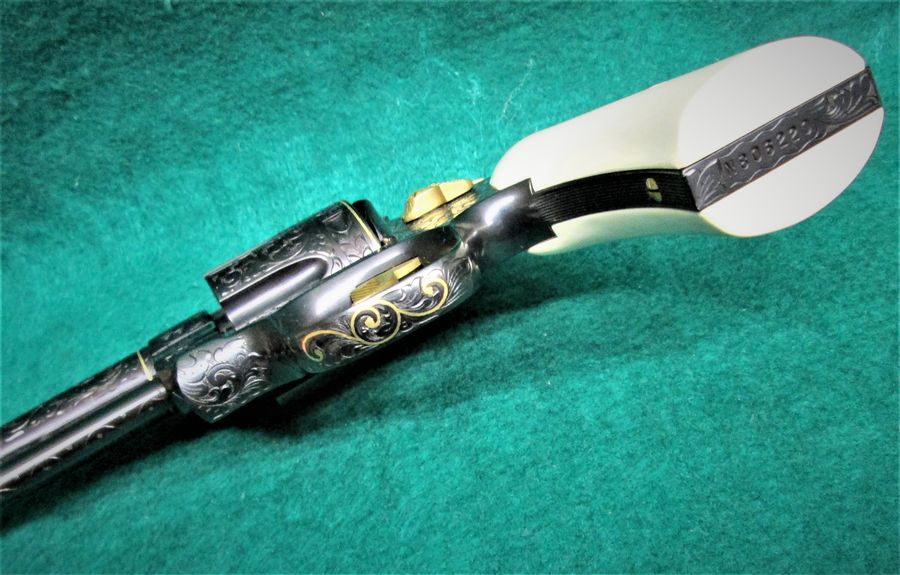



Now here is the Bad News first then the Great News !
The Bad
They are very Expensive. They are also hard to find it in order to buy one.
Folks who gave them are very condensation to non Sig Owners.
(Not True actually, I just checking to see if you are paying attention that’s all)
They are most Boringly pistol ever made!
The State of California in its “Infinite Wisdom”. Will not allow me to use or own any of the High Capacity magazines available in the FREE STATES of the USA.

It will go thru a box of 9mm in no time flat!
Now for the The Good News!
It shoots like a dream & makes for a Happy Gun Owner!
It is super accurate! (See the video below !)
It will function with any kind of 9mm ammo around it.
It is made out of steel. Making it a great thing for Pistol Whipping if need be.
It is super easy to tear down & clean!

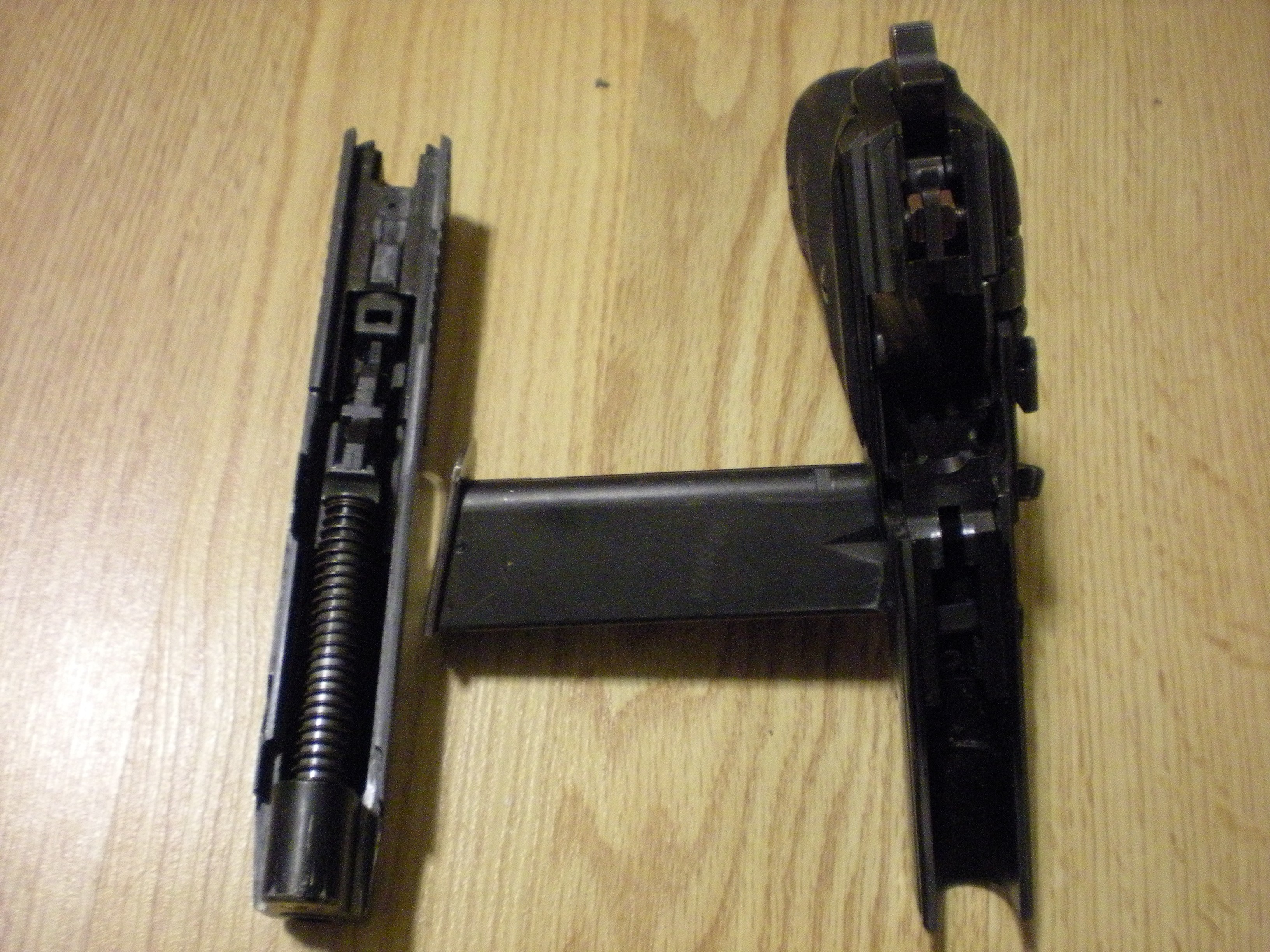
Here is some more & Better Technical information!
Thanks
Grumpy
SIG Sauer P226
|
|
It has been suggested that SIG Sauer P227 be merged into this article. (Discuss) Proposed since June 2016. |
| This article needs additional citations for verification. (December 2016) (Learn how and when to remove this template message) |
| SIG Sauer P226 | |
|---|---|
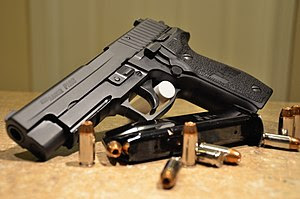 |
|
| Type | Semi-automatic pistol |
| Place of origin | Germany |
| Service history | |
| Used by | See Users |
| Production history | |
| Designed | 1980-1983 |
| Manufacturer | SIG Sauer |
| Produced | 1983-present |
| Variants | See Variants |
| Specifications | |
| Weight | 964 g (34.0 oz) (w/ magazine)[1] |
| Length | 196 mm (7.7 in)[2] |
| Barrel length | 112 mm (4.4 in)[2] |
| Width | 38.1 mm (1.50 in)[1] |
| Height | 140 mm (5.5 in)[1] |
|
|
|
| Cartridge | 9×19mm Parabellum, .40 S&W, .357 SIG, .22 Long Rifle (Classic 22 model only) |
| Action | Mechanically locked, recoil operated(DA/SA or DAO) |
| Feed system | 10-, 12-, 13-, or 15-round magazine(.40 S&W, .357 SIG); 10-, 15-, 17-, 18-, or 20-round magazine (9×19mm Parabellum); 10-round polymer magazine (Classic 22 only) |
| Sights | Iron sights |
The SIG Sauer P226 is a full-sized, service-type pistol made by SIG Sauer. It is chambered for the 9×19mm Parabellum, .40 S&W, .357 SIG, and .22 Long Rifle. It is essentially the same basic design of the SIG Sauer P220, but developed to use higher capacity, double stack magazines in place of the single stack magazines of the P220. The P226 itself has spawned further sub-variants; the P228 and P229 are both compact versions of the double stack P226 design. The SIG Sauer P226 and its variants are in service with numerous law enforcement and military organizations worldwide.[3]
Contents
[hide]
- 1History
- 2Design details
- 3Manufacture
- 4Variants
- 4.1P226 Rail
- 4.2P226 Tactical
- 4.3P226 Tactical Operations (TacOps)
- 4.4P226 Navy
- 4.5P226 MK25
- 4.6P226 Blackwater
- 4.7P226 SCT
- 4.8P226 Equinox
- 4.9P226 ST
- 4.10P226 S Sport Stock
- 4.11P226R HSP
- 4.12P226 X-Five
- 4.13P226 X-Six
- 4.14X-Series
- 4.15P226 Elite
- 4.16P226 Combat
- 4.17P226 E2
- 4.18P226/P229 Classic 22
- 4.19P226 LDC
- 4.20P226 Legion
- 4.21P228 (M11)
- 4.22P229
- 4.23DAK Version
- 4.24P224
- 5Users
- 6See also
- 7Notes and references
- 8External links
History[edit]
Schweizerische Industrie Gesellschaft (SIG) is a Swiss company, now known as Swiss Arms. In 1975, SIG entered into an agreement with German gun manufacturer J.P. Sauer & Sohn to develop and market a new handgun which became the P220. The P220 was the first SIG Sauer handgun sold in the USA. It was marketed initially by Browning as the Browning BDA. The SIG Sauer P220 is a refinement of the Petter-Browning design used in the SIG P210. The locked breech design is very different and was pioneered by SIG Sauer. See also The first SIG Sauer Handgun.
The P226 was designed for entry into the XM9 Service Pistol Trials (see also Joint Service Small Arms Program) that were held by the US Army in 1984 on behalf of the US armed forces to find a replacement for the M1911A1 and 24 other makes of handgun in US military service. Only the Beretta 92SBF and the SIG P226 satisfactorily completed the trials.[4]According to a GAO report, Beretta was awarded the M9 contract for the 92F due to a lower total package price. The P226 cost less per pistol than the 92F, but SIG’s package price with magazines and spare parts was higher than Beretta’s. The Navy SEALs, however, later chose to adopt the P226 as the P226 MK25 with special corrosion protection.[5]
For the U.S. military XM9 trials, the P226 was imported by Saco Defense. Interarms took over importing when the pistol was introduced for civilian sales. SIG Sauer eventually founded SIGARMS, Inc. (Now SIG Sauer in the United States to handle importation of their products. In 2000, SIG Holding AG sold J.P. Sauer & Sohn GmbH to two German businessmen.[6] The brand name SIG Sauer remained at J.P. Sauer & Sohn GmbH.
Design details[edit]

Detail of the controls and parts: 1. Ejection port/locking lug, 2. Rear sights, 3. Hammer, 4. Takedown lever, 5. Decocker, 6. Slide stop, 7. Trigger, 8. Magazine release.
The P226, like the other members of the SIG Classic family, operates by the locked breech short-recoil method pioneered by John Browning. On firing, the slide and barrel are locked together for a few millimetres of rearward movement, after which the barrel is cammed down at the rear. By this time the bullet has left the barrel and the pressure has dropped to safe levels, whereupon the slide completes the rearward stroke, ejecting the spent cartridge. The recoil spring then propels the slide forward, stripping a round from the magazine and in the last few millimetres of forward movement the barrel is cammed upwards, locking the slide and barrel together again.
Instead of the locking lugs and recesses milled into the barrel and slide of other Browning-type firearms (such as the Colt M1911A1, Browning Hi-Power and CZ 75), the P226 locks the barrel and slide together using an enlarged breech section of the barrel locking into the ejection port. This modified system, which was devised by SIG based on Charles Petter‘s Modèle 1935A pistol and their own SIG P210, has no functional disadvantages compared to the original system, and has since been copied by numerous firearm manufacturers.
The slide of the pre-1996 P226 was a heavy gauge, mill finished sheet metal stamping with a welded on nose section incorporating an internal barrel bushing. The breech block portion was a machined insert attached to the slide by means of brazing and a roll pin visible from either side. Since 1996, production has shifted to CNC machining and the slide is now milled from a single piece of stainless steel. Therefore, the current standard P226 has a Nitron coated, stainless steel slide. This resulted in a stronger slide, which was necessary to chamber the more powerful .40 S&W and .357 SIG cartridges.[citation needed] The frame of most models is made from hard anodized aluminumalloy.
The standard SIG P226 incorporates a decocking lever on the left side of the frame above the magazine release button, which first appeared on the Sauer 38Hprior to World War II, which allows the hammer to be dropped safely. In chambering or firing a round, the actuation of the slide automatically cocks the hammer. By using the decocking lever, the hammer can be de-cocked without actuating the firing pin block, making it impossible to accidentally fire the firearm by using the decocking lever. Furthermore, using the decocking lever makes the firearm “drop safe“, which means the firing pin will be blocked from striking a loaded round unless the trigger is pulled. Pulling the trigger and slowly lowering the hammer does not make the firearm “drop safe”, and can result in an accidental discharge if sufficient force is applied to the hammer.
Properly decocked, the pistol can be holstered safely and can be fired in double action mode by simply pulling the trigger. The SIG P226 has no manual safety. Double action trigger pressure is approximately 44 N (9.9 lbf). Subsequent shots are fired in single action mode with a lighter trigger pressure of approximately 20 N (4.5 lbf). As with other DA/SA pistols such as the HK USP and Beretta 92F, some training is required to minimize the difference in point of aim caused by the different trigger pressure between a first double action shot and subsequent single action shots. The hammer may also be manually cocked at any time by the user to fire in single action mode.
Manufacture[edit]
SIG Sauer firearms are manufactured in Switzerland, in Eckernförde, Germany by J.P. Sauer & Sohn, and in Exeter, New Hampshire, United States by SIG Sauer Inc., formerly SIGARMS Inc.
Copies of the P226 are produced in China by Norinco, under the name of NP226. Other unlicenced copies include the MA-6 in Myanmar and ZOAF in Iran, both are standard-issue pistols of their armed forces.
Variants[edit]
P226 Rail[edit]
The P226 Rail (or P226R) is the same as a P226, but it has a rail on the underside of the frame, just forward of the trigger guard. The P226R’s rail has a more rounded contour than the military standard M1913 Picatinny rail and while most Picatinny-rail accessories will fit, not all will. This has now become the standard P226.[1]
P226 Tactical[edit]
A P226R with an extended 127 mm (5.0 in) barrel and external threads to accept a suppressor (the standard P226 barrel length is 112mm (4.4 in)). It was also equipped with SIGLITE Night Sights, 1 extended 20rd. magazine and 2 standard 15rd. magazines.
P226 Tactical Operations (TacOps)[edit]
Essentially a P226 Elite with extended Magwell grips and a Nitron coated stainless steel slide. The Elite beavertail frame is used (with standard accessory rail), and the slide features front cocking serrations. Like the Elite, SRT is standard. Magazine capacity is 20 rounds in 9mm, and 15 rounds in .40S&W and .357 SIG. The firearm comes with SigLite rear combat night sights and a TruGlo tritium fiber-optic front sight. The firearm ships with 4 magazines. An extended, threaded barrel is optional.
[edit]
U.S. Navy SEAL teams started using the SIG P226 in the 1980s, after German Kampfschwimmer tested them successfully.
The first Naval Special Warfare inspired P226 pistols to be offered to the public were the NSW Commemoratives, issued in early 2004. The SIG P226-9-NAVY is a version of the SIG P226 produced that features a stainless steel slide engraved with an anchor to designate them as Naval Special Warfare pistols. SIGARMS raised $100,000 for the Special Operations Warrior Foundation through the sale of these NSW serialized pistols. The pistol with the serial number NSW0001 was sold during a live auction on the US-wide syndicated Laura Ingraham radio show for an additional $25,000. Later produced commercial versions added a universal rail for accessory attachments while retaining the anchor of previous models, but do not have the SIGLITE Night Sights.[7]

A P226 Mk25 model featuring the UID barcode, Silver Anchor and a Surefire X300 Ultra weapon light mounted on the Picatinny rail.
P226 MK25[edit]
Released in 2011, the MK25 has been advertised by SIG as being identical to firearm carried by the U.S. Navy SEALs. Features that help identify it amongst other P226 variants include the silver anchor and UID identification label on the left side of the pistol, as well as a mil-spec picatinny rail. Although cosmetically similar to the Navy model, the MK25 features an anti-corrosion coating applied to all external and internal surfaces, as well as SIGLITE Night Sights.[8]
P226 Blackwater[edit]
Introduced in 2007, the SIG P226 Blackwater was designed in cooperation with the Blackwater Training Center. It featured SIGLITE front and rear night sights, the Blackwater USA logo on the slide and wood grips, an integral Picatinny rail, black anodized frame, and Nitron-coated stainless steel slide. It was available only in 9×19mm Parabellum, with a double-action/single-action (DA/SA) trigger. The gun was sold with five 15-round 9mm magazines. The P226 Blackwater was discontinued in 2009 with the release of the P226 Blackwater Tactical[9] – a nearly identical pistol also with 20-round 9mm magazines.[10] The Blackwater Tactical has since been discontinued, having been replaced by the Tactical Operations. It is essentially the same firearm, but lacks Blackwater markings.
P226 SCT[edit]
The P226 SCT (Super Capacity Tactical) is an all black, Nitron finished P226 featuring front cocking serrations, accessory rail, a SIGLITE rear night sight, a TRUGLO Tritium Fiber Optic front sight and comes with four newly designed 20-round magazines for the 9mm version or four 15-round magazines for the .40 S&W version.
P226 Equinox[edit]
The P226 Equinox comes chambered in .40 S&W and features a two-tone accented design. The design is achieved by the brush polished flats of the slide and nickel accents of the gun’s controls. The P226 Equinox comes with a TRUGLO Tritium Fiber Optic front sight, rear SIGLITE night sights, SIG accessory rail, and gray laminated wood grips.
P226 ST[edit]
The SIG Sauer P226 ST was a limited production all-stainless version of the SIG P226 pistol. It is heavier than a standard P226 because the frame was made of stainless steel instead of aluminum. Weight with the magazine was a hefty 1,196 g (42.2 oz) vs 964 g (34.0 oz) of the standard aluminum-framed version. The added weight of an all-stainless frame is claimed to provide greater recoil reduction and a quicker return to target between shots making it a common choice among Practical Shooting competitors. The P226 Stainless had a blued barrel and featured an M1913 Picatinny rail. These frames were made in Germany. Prototypes were tested in 2004 and it went into production in very limited numbers. The P226 ST is no longer manufactured.
P226 S Sport Stock[edit]
The P226 Sport Stock was produced in Germany in 2002 and 2004 in limited numbers, all stainless construction with a strengthened frame dust cover, 4.4 inch stainless bull barrel, extended controls, and comes originally with Hogues grips and LPA target sights, these are often referred as the SIG Mastershop predecessors to the X-family.
P226R HSP[edit]
On sale in September 2005, SIG Sauer Homeland Security Pistols (HSP) are the same models SIG builds for the United States Department of Homeland Security. This is a limited production run of 1,000 P226R HSP pistols available engraved with the American flag and Homeland Security X of 1000. Additionally, each pistol comes in .40 S&W caliber and is engraved with serial number barcoding just like those which were shipped to DHS. The HSP also features the new DAK trigger, a stainless steel Nitron slide topped with SIGLITE night sights, and a light weight alloy frame with rail.
There is also a P229R HSP model available with the same features.
P226 X-Five[edit]
The SIG Sauer P226 X-Five is a competition only variant of the P226 with a 127 mm (5.0 in) slide and barrel, beavertail grip, and an adjustable rear target sight. Intended for IPSC Wa1500, bullseye and other centrefire competitive shooting, the X-Five is hand-fitted and assembled in Germany, and its resulting accuracy accordingly rivals the SIG P210. Available in 9mm or .40 S&W, there are five models being offered in the United States:
- The “Competition” model has a single-action-only (SA) trigger, ambidextrous thumb safety, flared magazine well, and high-capacity magazines (19-round 9mm/ 14-round .40 S&W).
- The “Level-1” model adds a special adjustable SA trigger and Nill wood grips.
- The “Lightweight” model is similar to the “Level-1” but with an alloy rather than stainless frame. (US models only chambered for 9mm.)
- The “Allround” model has a double-action/single-action (DA/SA) trigger, a decocking lever and a standard magazine well designed to accommodate P226 magazines.
- The “Tactical” model comes with a black Ilaflon finish, and features a heavy-weight alloy frame with a SIG rail, and fixed contrast or tritium night sights. Available in single action only (SAO) configuration. The X-Five Tactical model is available only in 9mm.[11]
- The “Norway” is a very limited edition model that was created for the Norwegian Special Forces and comes completely made of stainless steel with a PVD coating. There were approximately sixteen of these imported to the U.S. making them extremely scarce.
All SIG P226 X-Five models include a factory test target with a sub-50 mm (2.0 in) 5-shot grouping from 25 m (27 yd).
P226 X-Six[edit]
The SIG P226 X-Six is designed, manufactured, and marketed as a precision pistol under SIG’s sporting firearm line. The X-Six features an extended slide and frame to accommodate a 152 mm (6.0 in) barrel, an ambidextrous manual safety and a trigger adjustable for pull weight, distance and stop. To further enhance the X-Six’s sporting pedigree the pistol features a standard low profile adjustable sights, grip grooves cut into the front of the frame, lightweight magazine extension and NILL sporting grip plates.
- The P226 X-Six is also offered with an aluminum frame. This model, designated the P226 X-Six AL is identical to its steel frame counterpart in every way yet weighs in at only 1,070 g (38 oz).
X-Series[edit]
The X-Series was launched in 2013. It is a redesign and expansion of SIG Sauer competitive models, consisting of the brand new X-Short (Barrel lengths comparable to the standard P226) and updated versions of both the X-Five and the X-Six. All three barrel lengths are available in Classic, Match and Supermatch configurations. In addition, there are a number of specialized models available that feature only one or two of the barrel lengths. The line features great interchangeability of parts, along with a wide array of accessories. For instance, sights can be replaced quickly by undoing a screw and some clips.
- The “Classic”[12] model most closely resembles the X-Five and X-Six of old. The models feature walnut grip plates, short magazine release, completely adjustable SAO trigger system and micrometer sights.
- The “Match”[13] model is a sporting model featuring black laminated wood grip plates, extended magazine catch, skeletonized hammer, fully skeletonized SAO trigger and adjustable micrometer sights.
- The “Supermatch”[14] model is their premier competition model. It features G10 grips, sport-magazine catch, skeletonized hammer, fully adjustable SAO straight match trigger and a sporting disassembly lever.
- The “Allround”[15] most closely resembles the P226 the range is built on. It is an X-Five with a DA/SA trigger assembly, and has the normal SIG Sauer decocker and internal safeties. The pistol is, amongst other things, intended for the IPSC Production division.[16]
- The “SO Series”[17] is a model intended for service pistol competitions. It comes in two variants where the difference is the frame material. The SO has a steel frame, while the AL SO SAO has an aluminium frame. Both versions feature fixed sights (on an adaptor plate), a non-adjustable SAO trigger, short magazine catch and polymer grip plates.
- The “X-Press”[18] model is a base-model X-Five, ready to accept the upgrades the user wants.
Additionally, the SIG Sauer mastershop has three Supermatch-based models available for more specialized competitions.[19] The X-Five Open is intended for the IPSC Open division, while the X-Six PPC and X-Six PPC Open are intended for PPC 1500 competitions.
P226 Elite[edit]

A SIG Sauer P226 Elite Dark with attached Streamlight TLR-1s weapon light. Note the extended beavertail.
The P226 Elite adds an ergonomic extended beavertail, forward cocking serrations, front strap checkering, custom wood grips, adjustable combat night sights, and the Short Reset Trigger (SRT). SIG engineers designed the SRT to provide the same safety and action of the SIG DA/SA trigger with a reset that is 60% shorter for faster trigger return during high speed shooting. The Elite Dark is equipped with alloy grips produced by Hogue instead of wood. The Platinum Elite also has aluminum grips. The P226 Elite line is available in 9mm, .357 SIG, and .40 S&W.
P226 Combat[edit]
Like the P220 Combat before it, the two models, P226 Combat and P226 Combat TB (Threaded Barrel), are available in DA/SA. Their frames are “Flat Dark Earth” in compliance with the Combat Pistol program. The Combat model comes with night sights, a Nitron-finished slide and barrel, fore slide serrations, desert tan polymer grips and a military standard M1913 Picatinny rail as well as phosphate coated internals. The TB model features an extra 15 mm (0.59 in) on the barrel, and external threads to accept a suppressor.
P226 E2[edit]
Introduced at the 2010 SHOT Show, the P226 E2 at the time was a significant update to the P226 line. ‘E2’ (pronounced ‘E-squared’), or otherwise known as “Enhanced Ergonomics”, is SIG Sauer’s attempt to make the large frame gun more ergonomic for persons with small and medium-sized hands. A reduced grip size and reduced reach trigger bring the trigger face back more than 13 mm (0.5 in), thus potentially allowing better trigger manipulation and control for a greater number of shooters. Other standard features include the Short Reset Trigger, aggressive grip finish texture, and a new wrap-around, one-piece grip panel configuration.[20] The gun was discontinued from the P226 model lineup at the end of 2010 but the E2-style grip system has been adopted on and carried over to other P226 variants.
P226/P229 Classic 22[edit]
This .22LR model’s primary purpose is as practice or range pistols. The Classic 22 has an aluminum slide with a nitron finish (instead of the centerfire stainless steel slide) and a barrel chambered in .22LR. The Classic 22 slide assembly is complete with a lighter recoil spring and plastic guide rod. It also incorporates the same frame and operation as center fire P226 models. The Classic 22 model is available as a stand-alone firearm or as a conversion kit to an existing center fire P226 or P229. Likewise, conversion kits (the SIG Sauer X-Change Kits) exist to convert a .22LR into 9mm, .40 S&W or .357 SIG.[21][22] The conversion can be accomplished by field stripping the firearm and replacing the slide assembly and magazine – a process that can be accomplished in seconds.
The Classic 22 use a 10-round polymer magazine in lieu of the steel magazines used by the centre fire models and conversion kits.
The P226 Classic 22 should not be confused with the SIG Sauer Mosquito .22LR pistol. The Classic 22 is a full-sized P226 while the Mosquito is modelled on the P226 but is 90% of the size. Also the Classic 22 is manufactured by SIG Sauer while the Mosquito is made under licence by German Sport Guns GmbH.
P226 LDC[edit]
In 2014 SIG Sauer sports division in Germany introduced the P226 LDC Version. This version is made for shooting sports and features a longer dust cover and 1913 rail. It also features the E2 grip and the SRT Short reset trigger system, HiViz front sight, adjustable rear sight and skeletonized hammer. The magazine takes 17 rounds.
P226 Legion[edit]
In 2015, SIG Sauer announced the Legion Series of firearms, including the P226 Legion (available in 9mm, .357 SIG, and .40 S&W)[23] and P226 SAO Legion (available in 9mm).[24] The P226 Legion included a number of modifications from the original West German P226, including upgraded sights, reduced decocker and slide release, grey PVD coating, custom grips, reduced beavertail, solid steel guide rod, and custom trigger.[25]
P228 (M11)[edit]
| SIG P228 & P229 | |
|---|---|
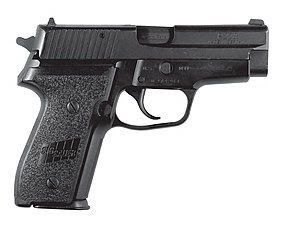
SIG Sauer P228/M11
|
|
| Type | Semi-automatic pistol |
| Place of origin | Germany Switzerland |
| Service history | |
| Used by | See Users |
| Production history | |
| Manufacturer | SIG Sauer |
| Variants | See Variants |
| Specifications | |
| Weight | 825 g (29.1 oz) (P228) 905 g (31.9 oz) (P229)[26] |
| Length | 180 mm (7.1 in)[26] |
| Barrel length | 99 mm (3.9 in)[26] |
| Width | 38 mm (1.5 in)[27] |
| Height | 137 mm (5.4 in)[27] |
|
|
|
| Cartridge | 9×19mm Parabellum (P228 & P229) .40 S&W, .357 SIG (P229 only) |
| Action | mechanically locked, recoil operated(DA/SA or DAO) |
| Feed system |
|
| Sights | Iron sights |
A compact version of the P226, the P228, is in use with various law enforcement agencies and also with the US military, where it is designated as the M11. The P228 has a shorter slide and barrel than the P226. Unlike the P226, the P228 is available only in 9×19mm Parabellum with a 13-round magazine, but can also use P226 15- or 20-round magazines. Aftermarket magazines extend the capacity of the P228 to 15 rounds.
From a distance, the P228 can be differentiated from the P226 by comparing the trigger guards (the P228’s is curved, while the P226’s is slightly hooked) and the barrel and slide lengths (the P228’s barrel 99 mm (3.9 in), thus having a corresponding shorter slide). Also in a side-by-side comparison the P228 would appear slightly shorter (15 mm (0.59 in) shorter) than the P226. The larger capacity P226 magazine can also be employed in the P228 although it extends from the base of the grip. Civilian sales of the P228 were discontinued with the introduction of 9mm chambering in the P229 but were recently reintroduced in limited quantities to civilians with an accessory rail and designated P228R.
The P229 is nearly identical to the P228, however its slide is made from milled stainless steel (versus the P228’s forged carbon steelslide) and is available in 9mm, .40 S&W, and .357 SIG. In the summer of 2012, SIG Sauer announced they were releasing the M11A1, which is essentially the milled-slide P229 chambered in 9mm with P228-labeled grips, a short reset trigger, SIGLITE tritium night sights, Mec-Gar 15-round magazines, and a military style smart tag and serial number. Later in 2012, Air Force M11b versions of the P228 were released for civilian sale. The M11 is to be replaced in the Army and Air Force through the Modular Handgun Systemprogram.[28] On January 19, 2017, it was announced that the SIG Sauer P320 Compact (M18) had been selected to replace the M11 as the U.S’s service pistol. One factor in winning the Modular Handgun System competition was the ability to employ 9mm Parabellum, .357 Sig or .40 S&W cartridges within the same basic frame.
P229[edit]
The P229 is a compact firearm often used for duty or concealed carry purposes. The standard version features a DA/SA trigger. The pistol has also been made available in a DAK (Double Action Kellermann) model, which is a DAO system with two trigger reset points, and a lighter, smoother pull than that of traditional DAO handguns. Most of the above-mentioned factory variants of the P226 are also available for the P229, including the Equinox option, Elite lineup, as well as a SAS GEN 2 model.
The P229 differs from its cousin the P226 in several respects, and was originally introduced to supplement and then replace the P228 by adding the .357 SIG and .40 S&W as available chamberings. The P229 was the first production handgun introduced that could chamber the .357 SIG round.[29] The P226 and P228 were originally manufactured using a stamped-steel slide on an aluminum alloy frame. The P229 consists of a CNC-milled stainless steel slide, typically colored black with a Nitron finish. The P229’s milled steel slide was introduced to handle the higher slide velocities created by the .357 SIG and .40 S&W loads, which the stamped slide of the P228 could not handle without the use of a much stiffer recoil spring. This would have made manual slide-retraction much more difficult and the use of a milled stainless slide (coupled with the new milling and stainless production capabilities found in the U.S. factory) with a standard weight recoil spring made more sense.
A standard weight recoil spring for the P229 is 71 N (16 lbf). A spring weight of 89 N (20 lbf) or higher would have been required if a stamped slide was used for the .40 S&W or .357 SIG chamberings. The SAAMI maximum chamber pressures of 9mm, 9mm +P, .40 S&W, and .357 SIG are as follows: 240 MPa (35,000 psi); 265 MPa (38,500 psi); 240 MPa (35,000 psi); and 280 MPa (40,000 psi). The slide on the P226 was redesigned in a similar fashion, and civilian sales of the P228 were discontinued in early 2005 due to declining sales and the advent of the P229 in 9mm. The P226 and P229 are both available with optional accessory rails and optional forged stainless steel frames.
The P229 can be chambered in .22 LR, 9mm, .40 S&W or .357 SIG. Changing between .40 S&W and .357 SIG is as simple as switching out the barrel; both calibers use the same magazine. Conversion barrels also allow a P229 or P226 to change between a .40 S&W/.357 SIG to a 9mm caliber. The 9mm model (both railed and non-railed) can be converted to .22 LR, but in the past its receivers were not designed to provide the space needed for handling the larger rounds of .357 SIG and .40 S&W. As SIG Sauer has slowly begun adopting the E2-style grip system across the P229 model range in 2011—a move similar to what is also happening to the larger P226—they have also begun using the .357 SIG/.40 S&W spec frame dimensions for their factory 9mm P229s, presumably to streamline the number of variations in parts needed to be kept in inventory. Although the manufacturer has announced that older-configuration magazines will continue to operate in the new receiver configuration, SIG Sauer has nonetheless revised new P229 9mm factory magazines to a design that is specific to the resized magazine well of the newly reconfigured receiver/frame. As a consequence, the newer magazines are not back-compatible, due to their larger width.
DAK Version[edit]
SIG released an altered version of the double-action only (DAO) pistols called the DAK (for Double Action Kellermann, after the designer of the trigger system, Harald Kellermann of Eckernförde, Germany).[30] The DAK capability is available in 220, 226, 229 and 239 models. When firing the pistol the first trigger pull is 29 N (6.5 lbf) (compared to 44 N (10 lbf) for the standard DAO). After the pistol fires and the trigger is released forward, the trigger has an intermediate reset point that is approximately halfway to the rest position. The trigger pull from this intermediate reset point is 38 N (8.5 lbf). If the trigger is released all the way forward, this will engage the primary trigger reset and have a trigger pull of 29 N (6.5 lbf). To engage the intermediate reset, the trigger must be held to the rear while the slide is cycled, either manually or by the recoil of a round being fired. The pistol can be cocked by pulling the trigger just past the trigger reset, then stopping, then releasing.
The United States Coast Guard began switching over to the SIG P229R-DAK in .40 S&W in 2004, beginning with the first shipment of 14,000 handguns from the production facility. According to producer site more than 3 million rounds were fired during U.S. Government testing.[31] The “R” denotes the accessory rail ahead of the trigger guard.
P224[edit]
The P224 is a subcompact variant of the compact P229. When the new design was announced in January 2012, the line was chambered only in .357 SIG and .40 S&W, and came only with a DAK (Double Action Kellermann) trigger. SIG announced that they would expand the line to include a DA/SA (Double Action/Single Action) trigger, a SRT DA/SA (Short Reset Double/Single Action) and would add a 9mm version in the future. As of 2013, the P224 was available in the original two calibers and the DAK trigger with four factory variants; SIG Anti-Snag (SAS), Nickel, Extreme and Equinox.[32] The pistol has since been discontinued.
The P224 is 170 mm (6.7 in) long, compared to 180 mm (7.1 in) for the P229. It is also about 23 mm (.9 in) shorter at 110 mm (4.5 in) and 5.1 mm (.2 in) thinner at 33 mm (1.3 in) than the P229. It weighs 190 g (6.6 oz) less than the alloy frame P229 and 420 g (14.8 oz) less than the stainless steel frame p229. The standard P224 magazine capacity is 10 rounds .357 SIG/.40 S&W and 12 rounds in 9mm.[33] It will also accept newer P229 magazines, which have a higher capacity.
Users[edit]
See also[edit]
Kimber Classic Super America .22 LR Rifle
Winchester Lever Action 22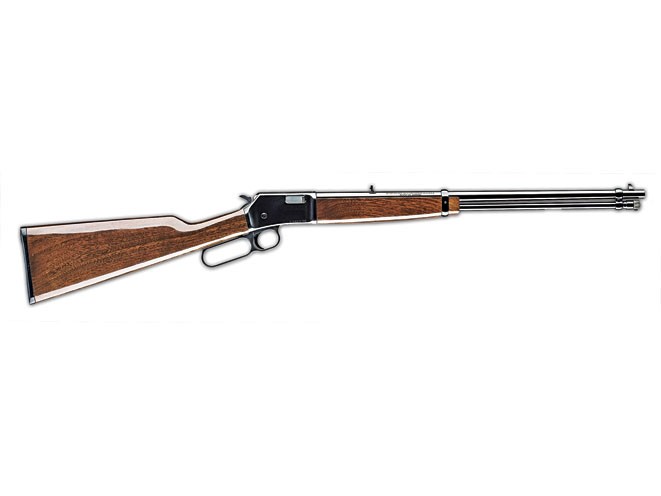 The Thompson/Center 22 Classic
The Thompson/Center 22 Classic

)

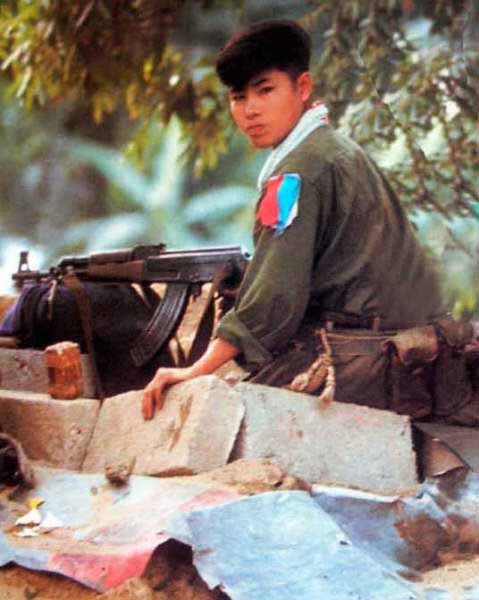


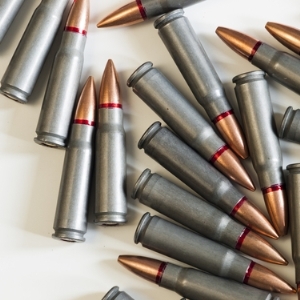
AK-47
The AK-47, or AK as it is officially known (Russian: Автомат Калашникова, translit. Avtomat Kalashnikova, lit. ‘Kalashnikov’s Automatic Rifle’), also known as the Kalashnikov, is a selective-fire(semi-automatic and fully automatic), gas-operated 7.62×39mmassault rifle, developed in the Soviet Union by Mikhail Kalashnikov. It is the originating firearm of the Kalashnikov rifle (or “AK”) family.
Design work on the AK-47 began in the last year of World War II (1945). In 1946, the AK-47 was presented for official military trials, and in 1948, the fixed-stock version was introduced into active service with selected units of the Soviet Army. An early development of the design was the AKS (S—Skladnoy or “folding”), which was equipped with an underfolding metal shoulder stock. In the spring of 1949, the AK-47 was officially accepted by the Soviet Armed Forces[8] and used by the majority of the member states of the Warsaw Pact.
Even after almost seven decades, the model and its variants remain the most popular and widely used assault rifles in the world because of their substantial reliability under harsh conditions, low production costs compared to contemporary Western weapons, availability in virtually every geographic region and ease of use. The AK-47 has been manufactured in many countries and has seen service with armed forces as well as irregular forces and insurgencies worldwide, and was the basis for developing many other types of individual, crew-served and specialised firearms. As of 2004, “Of the estimated 500 million firearms worldwide, approximately 100 million belong to the Kalashnikov family, three-quarters of which are AK-47s”.[3]
Contents
[hide]
History
Origins
During World War II, the Sturmgewehr 44 assault rifle used by German forces made a deep impression on their Soviet counterparts.[9][10] The select-fire rifle was chambered for a new intermediate cartridge, the 7.92×33mm Kurz, and combined the firepower of a submachine gun with the range and accuracy of a rifle.[11][12] On 15 July 1943, an earlier model of the Sturmgewehr was demonstrated before the People’s Commissariat of Arms of the USSR.[13] The Soviets were impressed with the weapon and immediately set about developing an intermediate caliber fully automatic rifle of their own,[9][10] to replace the PPSh-41 submachine guns and outdated Mosin–Nagant bolt-action rifles that armed most of the Soviet Army.[14]
The Soviets soon developed the 7.62×39mm M43 cartridge,[13] the semi-automatic SKS carbine and the RPD light machine gun.[15]Shortly after World War II, the Soviets developed the AK-47 assault rifle, which would quickly replace the SKS in Soviet service.[16][17] In the 1960s, the Soviets introduced the RPK light machine gun, an AK-47 type weapon with a stronger receiver, a longer heavy barrel, and a bipod, that would eventually replace the RPD light machine gun.[15]
Concept
Mikhail Kalashnikov began his career as a weapon designer in 1941, while recuperating from a shoulder wound, which he received during the Battle of Bryansk.[4][18] Kalashnikov himself stated…”I was in the hospital, and a soldier in the bed beside me asked: ‘Why do our soldiers have only one rifle for two or three of our men, when the Germans have automatics?’ So I designed one. I was a soldier, and I created a machine gun for a soldier. It was called an Avtomat Kalashnikova, the automatic weapon of Kalashnikov—AK—and it carried the date of its first manufacture, 1947.”[19]
The AK-47 is best described as a hybrid of previous rifle technology innovations. “Kalashnikov decided to design an automatic rifle combining the best features of the American M1 and the German StG44.”[20] Kalashnikov’s team had access to these weapons and had no need to “reinvent the wheel”. Kalashnikov himself observed: “A lot of Russian Army soldiers ask me how one can become a constructor, and how new weaponry is designed. These are very difficult questions. Each designer seems to have his own paths, his own successes and failures. But one thing is clear: before attempting to create something new, it is vital to have a good appreciation of everything that already exists in this field. I myself have had many experiences confirming this to be so.”[18]
There are claims about Kalashnikov copying other designs, like Bulkin’s TKB-415[21] or Simonov’s AVS-31.[22]
Early designs
Kalashnikov started work on a submachine gun design in 1942[23] and with a light machine gun in 1943.[24][25] “Early in 1944, Kalashnikov was given some M1943 7.62×39mm cartridges and informed that there were several designers working on weapons for this new Soviet small-arms cartridge. It was suggested to him that this new weapon might well lead to greater things, and he undertook work on the new rifle.”[26] In 1944, he entered a design competition with this new 7.62×39mm, semi-automatic, gas-operated, long stroke piston, carbine, strongly influenced by the American M1 Garand.[27] “The rifle that Kalashnikov designed was in the same class as the familiar SKS-45 Simonov with fixed magazine and gas tube above the barrel.”[26] However, this new Kalashnikov design lost out to a Simonov design.[28]
In 1946, a new design competition was initiated to develop a new assault rifle.[29] Kalashnikov submitted an entry. It was gas-operated rifle with a short-stroke gas piston above the barrel, a breech-block mechanism similar to his 1944 carbine, and a curved 30-round magazine.[30] Kalashnikov’s rifles AK-1 (with a milled receiver) and AK-2 (with a stamped receiver) proved to be reliable weapons and were accepted to a second round of competition along with other designs.
These prototypes (also known as the AK-46) had a rotary bolt, a two-part receiver with separate trigger unit housing, dual controls (separate safety and fire selector switches) and a non-reciprocating charging handle located on the left side of the weapon.[30][31] This design had many similarities to the STG 44.[32] In late 1946, as the rifles were being tested, one of Kalashnikov’s assistants, Aleksandr Zaitsev, suggested a major redesign to improve reliability. At first, Kalashnikov was reluctant, given that their rifle had already fared better than its competitors. Eventually, however, Zaitsev managed to persuade Kalashnikov.
In November 1947, the new prototypes (AK-47s) were completed. It utilized a long-stroke gas piston above the barrel. The upper and lower receivers were combined into a single receiver. The selector and safety were combined into a single control-lever/dust-cover on the right side of the rifle. And, the bolt-handle was simply attached to the bolt-carrier. This simplified the design and production of the rifle. The first army trial series began in early 1948.[33] The new rifle proved to be reliable under a wide range of conditions with convenient handling characteristics. In 1949, it was adopted by the Soviet Army as “7.62 mm Kalashnikov assault rifle (AK)”.[8]
Further development
There were many difficulties during the initial phase of production. The first production models had stamped sheet metal receivers with a milled trunnion and butt stock insert, and a stamped body. Difficulties were encountered in welding the guide and ejector rails, causing high rejection rates.[34] Instead of halting production, a heavy[N 2] machined receiver was substituted for the sheet metal receiver. This was a more costly process, but the use of machined receivers accelerated production as tooling and labor for the earlier Mosin–Nagant rifle’s machined receiver were easily adapted.[35] Partly because of these problems, the Soviets were not able to distribute large numbers of the new rifle to soldiers until 1956. During this time, production of the interim SKS rifle continued.[34]
Once the manufacturing difficulties of non milled receivers had been overcome, a redesigned version designated the AKM (M for “modernized” or “upgraded”; in Russian: Автомат Калашникова Модернизированный [Avtomat Kalashnikova Modernizirovanniy]) was introduced in 1959.[36] This new model used a stamped sheet metal receiver and featured a slanted muzzle brake on the end of the barrelto compensate for muzzle rise under recoil. In addition, a hammer retarder was added to prevent the weapon from firing out of battery (without the bolt being fully closed), during rapid or fully automatic fire.[34] This is also sometimes referred to as a “cyclic rate reducer”, or simply “rate reducer”, as it also has the effect of reducing the number of rounds fired per minute during fully automatic fire. It was also roughly one-third lighter than the previous model.[36]
| Receiver type | Description[35] |
|---|---|
| Type 1A/B | The original stamped receiver for the AK-47 first adopted and produced in 1949. The 1B was modified for an underfolding stock with a large hole present on each side to accommodate the hardware for the underfolding stock. |
| Type 2A/B | The first milled receiver made from steel forging. It went into production in 1951 and production ended between 1953 and 1954. The Type 2A has a distinctive socketed metal “boot” connecting the butt stock to the receiver and the milled lightening cut on the sides runs parallel to the barrel. |
| Type 3A/B | “Final” version of the AK-47 milled receiver made from steel bar stock. It went into production between 1953 and 1954. The most ubiquitous example of the milled-receiver AK-47. The milled lightening cut on the sides is slanted to the barrel axis. |
| Type 4A/B | AKM receiver stamped from a smooth 1.0 mm (0.04 in) sheet of steel supported extensively by pins and rivets. It went into production in 1959. Overall, the most-used design in the construction of the AK-series rifles. |
Both licensed and unlicensed production of the Kalashnikov weapons abroad were almost exclusively of the AKM variant, partially due to the much easier production of the stamped receiver. This model is the most commonly encountered, having been produced in much greater quantities. All rifles based on the Kalashnikov design are frequently referred to as AK-47s in the West, although this is only correct when applied to rifles based on the original three receiver types.[37] In most former Eastern Bloc countries, the weapon is known simply as the “Kalashnikov” or “AK”. The differences between the milled and stamped receivers includes the use of rivets rather than welds on the stamped receiver, as well as the placement of a small dimple above the magazine well for stabilization of the magazine.
Replacement
In 1974, the Soviets began replacing their AK-47 and AKM rifles with a newer design, the AK-74, which uses 5.45×39mmammunition. This new rifle and cartridge had only started to be manufactured in Eastern European nations when the Soviet Union collapsed, drastically slowing production of the AK-74 and other weapons of the former Soviet bloc.
Design
The AK-47 was designed to be a simple, reliable fully automatic rifle that could be manufactured quickly and cheaply, using mass production methods that were state of the art in the Soviet Union during the late 1940s.[38] The AK-47 uses a long stroke gas system that is generally associated with great reliability in adverse conditions.[27][39][40] The large gas piston, generous clearances between moving parts, and tapered cartridge case design allow the gun to endure large amounts of foreign matter and fouling without failing to cycle.
Cartridge

Wound Profiles of Russian small-arms ammunition compiled by Dr. Martin Fackler on behalf of the U.S. military
The AK fires the 7.62×39mm cartridge with a muzzle velocity of 715 m/s (2,350 ft/s).[7] The cartridge weight is 16.3 g (0.6 oz), the projectile weight is 7.9 g (122 gr).[41] The original Soviet M43 bullets are 123 grain boat-tail bullets with a copper-plated steel jacket, a large steel core, and some lead between the core and the jacket. The AK has excellent penetration when shooting through heavy foliage, walls or a common vehicle’s metal body and into an opponent attempting to use these things as cover. The 7.62×39mm M43 projectile does not generally fragment when striking an opponent and has an unusual tendency to remain intact even after making contact with bone. The 7.62×39mm round produces significant wounding in cases where the bullet tumbles (yaws) in tissue,[42] but produces relatively minor wounds in cases where the bullet exits before beginning to yaw.[43][44][45] In the absence of yaw, the M43 round can pencil through tissue with relatively little injury.[43][46]
Most, if not all, of the 7.62×39mm ammunition found today is of the upgraded M67 variety. This variety deleted the steel insert, shifting the center of gravity rearward, and allowing the projectile to destabilize (or yaw) at about 3.3 in (8.4 cm), nearly 6.7 in (17 cm) earlier in tissue than the M43 round.[47] This change also reduces penetration in ballistic gelatin to ~25 in (64 cm) for the newer M67 round versus ~29 in (74 cm) for the older M43 round.[47][48] However, the wounding potential of M67 is mostly limited to the small permanent wound channel the bullet itself makes, especially when the bullet yaws.[47]
Operating mechanism

The gas-operated mechanism of a Chinese AK-47
To fire, the operator inserts a loaded magazine, pulls back and releases the charging handle, and then pulls the trigger. In semi-automatic, the firearm fires only once, requiring the trigger to be released and depressed again for the next shot. In fully automatic, the rifle continues to fire automatically cycling fresh rounds into the chamber, until the magazine is exhausted or pressure is released from the trigger. After ignition of the cartridge primer and propellant, rapidly expanding propellant gases are diverted into the gas cylinder above the barrel through a vent near the muzzle. The build-up of gases inside the gas cylinder drives the long-stroke piston and bolt carrier rearward and a cam guide machined into the underside of the bolt carrier along with an ejector spur on the bolt carrier rail guide, rotates the bolt approximately 35° and unlocks it from the barrel extension via a camming pin on the bolt. The moving assembly has about 5.5 mm (0.2 in) of free travel, which creates a delay between the initial recoil impulse of the piston and the bolt unlocking sequence, allowing gas pressures to drop to a safe level before the seal between the chamber and the bolt is broken. The AK-47 does not have a gas valve; excess gases are ventilated through a series of radial ports in the gas cylinder. The Kalashnikov operating system offers no primary extraction upon bolt rotation, but uses an extractor claw to eject the spent cartridge case.[49]
Barrel
The rifle received a barrel with a chrome-lined bore and four right-hand grooves at a 240 mm (1 in 9.45 in) rifling twist rate. The gas block contains a gas channel that is installed at a slanted angle in relation to the bore axis. The muzzle is threaded for the installation of various muzzle devices such as a muzzle brake or a blank-firing adaptor.
Gas block
The gas block of the AK-47 features a cleaning rod capture or sling loop. Gas relief ports that alleviate gas pressure are placed horizontally in a row on the gas cylinder.
Fire selector

Việt Cộng soldier armed with an AK-47, standing beneath the flag of the National Liberation Front of South Vietnam
The fire selector is a large lever located on the right side of the rifle, it acts as a dust-cover and prevents the charging handle from being pulled fully to the rear when it is on safe.[50] It is operated by the shooter’s right fore-fingers and has 3 settings: safe (up), full-auto (center), and semi-auto (down).[50] The reason for this is that under stress a soldier will push the selector lever down with considerable force bypassing the full-auto stage and setting the rifle to semi-auto.[50] To set the AK-47 to full-auto requires the deliberate action of centering the selector lever.[50]To operate the fire selector lever, right handed shooters have to briefly remove their right hand from the pistol grip, which is ergonomically sub-optimal. Some AK-type rifles also have a more traditional selector lever on the left side of the receiver just above the pistol grip.[50] This lever is operated by the shooter’s right thumb and has three settings: safe (forward), full-auto (center), and semi-auto (backward).[50]
Sights
The AK-47 uses a notched rear tangent iron sight calibrated in 100 m (109 yd) increments from 100 to 800 m (109 to 875 yd).[51] The front sight is a post adjustable for elevation in the field. Horizontal adjustment requires a special drift tool and is done by the armory before issue or if the need arises by an armorer after issue. The sight line elements are approximately 48.5 mm (1.9 in) over the bore axis. The “point-blank range” battle zero setting “П” on the 7.62×39mm AK-47 rear tangent sight element corresponds to a 300 m (328 yd) zero.[51][52] These settings mirror the Mosin–Nagant and SKS rifles, which the AK-47 replaced. For the AK-47 combined with service cartridges, the 300 m battle zero setting limits the apparent “bullet rise” within approximately −5 to +31 cm (−2.0 to 12.2 in) relative to the line of sight. Soldiers are instructed to fire at any target within this range by simply placing the sights on the center of mass (the belt buckle, according to Russian and former Soviet doctrine) of the enemy target. Any errors in range estimation are tactically irrelevant, as a well-aimed shot will hit the torso of the enemy soldier. Some AK-type rifles have a front sight with a flip-up luminous dot that is calibrated at 50 m (55 yd), for improved night fighting.[51]
Furniture
The AK-47 was originally equipped with a buttstock, handguard and an upper heat guard made from solid wood. With the introduction of the Type 3 receiver the buttstock, lower handguard and upper heatguard were manufactured from birchplywood laminates.[35] Such engineered woods are stronger and resist warping better than the conventional one-piece patterns, do not require lengthy maturing, and are cheaper. The wooden furniture was finished with the Russian amber shellac finishing process.[citation needed] AKS and AKMS models featured a downward-folding metal butt-stock similar to that of the German MP40 submachine-gun, for use in the restricted space in the BMP infantry combat vehicle, as well as by paratroops. All 100 series AKs use plastic furniture with side-folding stocks.
Magazines
The standard magazine capacity is 30 rounds. There are also 10, 20, and 40-round box magazines, as well as 75-round drum magazines.
The AK-47’s standard 30-round magazines have a pronounced curve that allows them to smoothly feed ammunition into the chamber. Their heavy steel construction combined with “feed-lips” (the surfaces at the top of the magazine that control the angle at which the cartridge enters the chamber) machined from a single steel billet makes them highly resistant to damage. These magazines are so strong that “Soldiers have been known to use their mags as hammers, and even bottle openers”.[53][54] This contributes to the AK-47 magazine being more reliable, but makes it heavier than U.S. and NATO magazines.
The early slab-sided steel AK-47 30-round detachable box magazines had 1 mm (0.039 in) sheet-metal bodies and weigh 0.43 kg (0.95 lb) empty.[40] The later steel AKM 30-round magazines had lighter sheet-metal bodies with prominent reinforcing ribs weighing 0.33 kg (0.73 lb) empty.[40][55] To further reduce weight, a light weight magazine with an aluminum body with a prominent reinforcing waffle rib pattern weighing 0.19 kg (0.42 lb) empty was developed for the AKM that proved to be too fragile and the small issued amount of these magazines were quickly withdrawn from service. As a replacement steel-reinforced 30-round plastic 7.62×39mm box magazines were introduced. These rust-coloredmagazines weigh 0.24 kg (0.53 lb) empty and are often mistakenly identified as being made of Bakelite (a phenolic resin), but were actually fabricated from two-parts of AG-S4 molding compound (a glass-reinforced phenol-formaldehyde binder impregnated composite), assembled using an epoxy resinadhesive.[56][57][58] Noted for their durability, these magazines did however compromise the rifle’s camouflage and lacked the small horizontal reinforcing ribs running down both sides of the magazine body near the front that were added on all later plastic magazine generations.[58] A second generation steel-reinforced dark-brown (color shades vary from maroonto plum to near black) 30-round 7.62×39mm magazine was introduced in the early 1980s, fabricated from ABS plastic. The third generation steel-reinforced 30-round 7.62×39mm magazine is similar to the second generation, but is darker colored and has a matte nonreflective surface finish. The current issue steel-reinforced matte true black nonreflective surface finished 7.62×39mm 30-round magazines, fabricated from ABS plastic weigh 0.25 kg (0.55 lb) empty.[7]
Early steel AK-47 magazines are 9.75 in (248 mm) long; the later ribbed steel AKM and newer plastic 7.62×39mm magazines are about 1 in (25 mm) shorter.[59][60]
The transition from steel to mainly plastic magazines yields a significant weight reduction and allows a soldier to carry more ammunition for the same weight.
| Rifle | Cartridge | Cartridge weight | Weight of empty magazine | Weight of loaded magazine | Max. 10.12 kg (22.3 lb) ammunition load* |
|---|---|---|---|---|---|
| AK-47 (1949) | 7.62×39mm | 16.3 g (252 gr) | slab-sided steel 430 g (0.95 lb) |
30-rounds 916 g (2.019 lb)[40] |
11 magazines for 330 rounds 10.08 kg (22.2 lb) |
| AKM(1959) | 7.62×39mm | 16.3 g (252 gr) | ribbed stamped-steel 330 g (0.73 lb) |
30-rounds 819 g (1.806 lb)[40][55] |
12 magazines for 360 rounds 9.83 kg (21.7 lb) |
| AK-103(1994) | 7.62×39mm | 16.3 g (252 gr) | steel-reinforced plastic 250 g (0.55 lb) |
30-rounds 739 g (1.629 lb)[40][55] |
13 magazines for 390 rounds 9.61 kg (21.2 lb) |
All 7.62×39mm AK magazines are backwards compatible with older AK variants.
10.12 kg (22.3 lb) is the maximum amount of ammo that the average soldier can comfortably carry. It also allows for best comparison of the three most common 7.62×39mm AK magazines.
Most Yugoslavian and some East German AK magazines were made with cartridge followers that hold the bolt open when empty; however, most AK magazine followers allow the bolt to close when the magazine is empty.
Accessories

AK-103 with GP-34 Grenade Launcher
Accessories supplied with the rifle include a 387 mm (15.2 in) long 6H3 bayonetfeaturing a 200 mm (7.9 in) long spear point blade. The AK-47 bayonet is installed by slipping the 17.7 mm (0.70 in) diameter muzzle ring around the muzzle and latching the handle down on the bayonet lug under the front sight base.[61]
All current model AKM rifles can mount under-barrel 40 mm grenade launchers such as the GP-25 and its variants, which can fire up to 20 rounds per minute and have an effective range of up to 400 metres.[62] The main grenade is the VOG-25 (VOG-25M) fragmentation grenade which has a 6 m (9 m) (20 ft (30 ft)) lethality radius. The VOG-25P/VOG-25PM (“jumping”) variant explodes 0.5–1 metre (1.6–3.3 ft) above the ground.[63]
The AK-47 can also mount a (rarely used) cup-type grenade launcher, the Kalashnikov grenade launcher that fires standard RGD-5 Soviet hand-grenades. The maximum effective range is approximately 150 meters.[64] This launcher can also be used to launch tear-gas and riot control grenades.
All current AKs (100 series) and some older models, have side rails for mounting a variety of scopes and sighting devices, such as the PSO-1 Optical Sniper Sight.[65] The side rails allow for the removal and remounting of optical accessories without interfering with the zeroing of the optic. However, the 100 series side folding stocks cannot be folded with the optics mounted.
Characteristics
Service life
The AK-47 and its variants are made in dozens of countries, with “quality ranging from finely engineered weapons to pieces of questionable workmanship.”[66] As a result, the AK-47 has a service/system life of approximately 6,000,[67] to 10,000,[68] to 15,000[69] rounds. The AK-47 was designed to be a cheap, simple, easy to manufacture assault rifle,[70]perfectly matching Soviet military doctrine that treats equipment and weapons as disposable items.[71] As units are often deployed without adequate logistical support and dependent on “battlefield cannibalization” for resupply, it is actually more cost-effective to replace rather than repair weapons.[71]
The AK-47 has small parts and springs that need to be replaced every few thousand rounds. However, “Every time it is disassembled beyond the field stripping stage, it will take some time for some parts to regain their fit, some parts may tend to shake loose and fall out when firing the weapon. Some parts of the AK-47 line are riveted together. Repairing these can be quite a hassle, since the end of the rivet has to be ground off and a new one set after the part is replaced.”[51]
Variants
- Early variants (7.62×39mm)
- Issue of 1948/49: Type 1: The very earliest models, stamped sheet metal receiver, are now very rare.
- Issue of 1951: Type 2: Has a milled receiver. Barrel and chamber are chrome plated to resist corrosion.
- Issue of 1954/55: Type 3: Lightened, milled receiver variant. Rifle weight is 3.47 kg (7.7 lb).[5]
- AKS (AKS-47): Type 1, 2, or 3 receiver: Featured a downward-folding metal stock similar to that of the German MP40, for use in the restricted space in the BMP infantry combat vehicle, as well as by paratroops.
- AKN (AKSN): Night scope rail.[72]
- Modernized (7.62×39mm)
- AKM: A simplified, lighter version of the AK-47; Type 4 receiver is made from stamped and riveted sheet metal. A slanted muzzle device was added to counter climb in automatic fire. Rifle weight is 3.1 kg (6.8 lb)[7] due to the lighter receiver. This is the most ubiquitous variant of the AK-47.
- RPK: Hand-held machine gun version with longer barrel and bipod. The variants—RPKS, RPKN (RPKSN), RPKL (RPKSL)—mirror AKM variants. The “S” variants have a side-folding wooden stock.
For the further developed AK models, see Kalashnikov rifles.
Production
Outside of the Soviet Union/Russia
Kalashnikov Concern (formerly Izhmash) has repeatedly claimed that the majority of foreign manufacturers are producing AK type rifles without proper licensing.[74][75]
| This section needs additional citations for verification. (February 2013) (Learn how and when to remove this template message) |
| Country | Military variant(s) |
|---|---|
| Albania | Automatiku Shqiptar model 56 (ASH-78 Tip-1) Albanian Automatic Assault Rifle Model 56 Type-1 [Made in Poliçan Arsenal] (Straight forward copy of Type 56, which in turn is a clone of the Soviet AKM rifle)
Automatiku Shqiptar Tipi 1982 (ASH-82) Albanian Automatic Assault Rifle Type 1982 [Made in Poliçan Arsenal] (Straight forward copy of AKMS) Automatiku Shqiptar model 56 (ASH-78 Tip-2) Albanian Light Machine Gun [Made in Poliçan Arsenal] (Straight forward copy of RPK) Automatiku Shqiptar model 56 (ASH-78 Tip-3) Albanian Automatic Hybrid Rifle Model 56 Type-3 [Made in Poliçan Arsenal] (Hybrid rifle for multi-purpose roles mainly Marksman rifle with secondary assault rifle and grenade launcher capability) Several other unnamed & unidentified versions of the AKMS have been produced mainly with short barrels similar to the Soviet AKS-74U mainly for special forces, Tank & Armoured crew also for Helicopter pilots and police. There have also been modifications and fresh production of heavily modified ASh-82 (AKMS) with SOPMOD accessories, mainly for Albania’s special forces RENEA & exports.[original research?] |
| Armenia | K-3 (bullpup, 5.45×39mm) |
| Azerbaijan | Khazri (AK-74M)[76] |
| Bangladesh | Chinese Type 56 |
| Bulgaria | AKK/AKKS (Type 3 AK-47/w. side-folding buttstock)
AKKMS (AKMS), AKKN-47 (fittings for NPSU night sights) AK-47M1 (Type 3 with black polymer furniture) AK-47MA1/AR-M1 (same as -M1, but in 5.56mm NATO) AKS-47M1 (AKMS in 5.56×45mm NATO) AKS-47S (AK-47M1, short version, with East German folding stock, laser aiming device) AKS-47UF (short version of -M1, Russian folding stock), AR-SF (same as −47UF, but 5.56mm NATO) AKS-93SM6 (similar to −47M1, cannot use grenade launcher) RKKS (RPK), AKT-47 (.22 rimfire training rifle) |
| Cambodia | Chinese Type 56, Soviet AK-47, and AKM |
| People’s Republic of China | Type 56 |
| Colombia | Galil ACE |
| Croatia | APS-95 |
| Cuba | AKM[77] |
| East Germany[78] | MPi-K/MPi-KS (AK-47/AKS)
MPi-KM (AKM; wooden and plastic stock), MPi-KMS-72 (side-folding stock), MPi-KMS-K (carbine) MPi-AK-74N (AK-74), MPi-AKS-74N (side-folding stock), MPi-AKS-74NK (carbine) KK-MPi Mod.69 (.22 LR select-fire trainer) |
| Egypt | AK-47, Misr assault rifle (AKMS), Maadi ARM (AKM) |
| Ethiopia | AK-47, AK-103 (manufactured locally at the State-run Gafat Armament Engineering Complex as the Et-97/1)[79] |
| Finland | Rk 62, Valmet M76 (other names Rk 62 76, M62/76), Valmet M78 (light machine gun), Rk 95 Tp |
| Hungary[80] | AK-55 (domestic manufacture of the 2nd Model AK-47)
AKM-63 (also known as AMD-63 in the US; modernized AK-55), AMD-65M (modernized AKM-63, shorter barrel and side-folding stock), AMP-69 (rifle grenade launcher) AK-63F/D (other name AMM/AMMSz), AK-63MF (modernized) NGM-81 (5.56×45mm NATO; fixed and under-folding stock) |
| India | INSAS (fixed and side-folding stock), KALANTAK (carbine), INSAS light machine gun (fixed and side-folding stock), a local unlicensed version with carbon fibre furniture designated as AK-7 [81]
Trichy Assault Rifle 7.62 mm, manufactured by Ordnance Factory Tiruchirappalli of Ordnance Factories Board[82] |
| Iran | KLS/KLF (AK-47/AKS), KLT (AKMS) |
| Iraq | Tabuk Sniper Rifle, Tabuk Assault Rifle (with fixed or underfolding stock, outright clones of Yugoslavian M70 rifles series), Tabuk Short Assault Rifle (carbine) |
| Israel | IMI Galil: AR (assault/battle rifle), ARM (assault rifle/light machine gun), SAR (carbine), MAR (compact carbine), Sniper (sniper rifle), SR-99 (sniper rifle)
|
| Italy | Bernardelli VB-STD/VB-SR (Galil AR/SAR)[83] |
| Nigeria | Produced by the Defence Industries Corporation of Nigeria as OBJ-006[84][85] |
| North Korea | Type 58A/B (Type 3 AK-47/w. stamped steel folding stock), Type 68A/B (AKM/AKMS), Type 88A/B-2 (AK-74/AKS-74/w. top folding stock)[86][87] |
| Pakistan | Reverse engineered by hand and machine in Pakistan’s highland areas (see Khyber Pass Copy) near the border of Afghanistan; more recently the Pakistan Ordnance Factories started the manufacture of an AK-47/AKM clone called PK-10[88] |
| Poland[89] | pmK (kbk AK) / pmKS (kbk AKS) (name has changed from pmK – “pistolet maszynowy Kałasznikowa”, Kalashnikov SMG to the kbk AK – “karabinek AK”, Kalashnikov Carbine in the mid-1960s) (AK-47/AKS)
kbkg wz. 1960 (rifle grenade launcher), kbkg wz. 1960/72 (modernized) kbk AKM / kbk AKMS (AKM/AKMS) kbk wz. 1988 Tantal (5.45×39mm), skbk wz. 1989 Onyks (compact carbine) kbs wz. 1996 Beryl (5.56×45mm), kbk wz. 1996 Mini-Beryl (compact carbine) |
| Romania | PM md. 63/65 (AKM/AKMS), PM md. 80, PM md. 90, collectively exported under the umbrella name AIM or AIMS
PA md. 86 (AK-74), exported as the AIMS-74 PM md. 90 short barrel, PA md. 86 short barrel, exported as the AIMR PSL (designated marksman rifle; other names PSL-54C, Romak III, FPK and SSG-97) |
| South Africa | R4 assault rifle, Truvelo Raptor, Vektor CR-21 (bullpup) |
| Sudan | MAZ[90] (based on the Type 56) |
| Ukraine | Vepr (bullpup, 5.45×39mm), Malyuk (bullpup)[91] |
| United States | Century Arms: C39 (AK-47 var.), RAS47 (AKM var.), and C39v2 (AK-47 var.)), InterOrdnance: AKM247 (AKM var.) M214 (pistol), Palmetto State Armory: PSAK-47 (AKM var.), Arsenal Inc: SA M-7 (AK-47 var.), Destructive Devices Industries: DDI 47S (AKM var.) DDI 47M (AK-47 var), Rifle Dynamics: RD700 and other custom build AK / AKM guns |
| Vietnam | AKM-1 (AKM), TUL-1 (RPK), Galil Ace 31/32 |
| Venezuela | License granted, factory under construction[92] |
| Yugoslavia/Serbia | M64, M70, M72, M76, M77, M80, M82, M85, M90, M91, M92, M99, M21 |
Accuracy potential
The AK-47’s accuracy has always been considered to be “good enough” to hit an adult male torso out to about 300 m (328 yd),[93][94] though even experts firing from prone or bench rest positions at this range were observed to have difficulty placing ten consecutive rounds on target.[95] Later designs did not significantly improve its accuracy.[95] An AK can fire a 10-shot group of 5.9 in (15 cm) at 100 m (109 yd),[96] and 17.5 in (44 cm) at 300 m (328 yd)[95] The newer stamped-steel receiver AKM models, while more rugged and less prone to metal fatigue, are actually less accurate than the forged/milled receivers of their predecessors: the milled AK-47s are capable of shooting 3 to 5 in (8 to 13 cm) groups at 100 yd (91 m), whereas the stamped AKMs are capable of shooting 4 to 6 in (10 to 15 cm) groups at 100 yd (91 m).[94]
The best shooters are able to hit a man-sized target at 800 m (875 yd) within five shots (firing from prone or bench rest position) or ten shots (standing).[97]
|
|
The following table represents the Russian method for determining accuracy and it is far more complex than Western methods. In the West, one fires a group of shots into the target and then simply measure the overall diameter of the group. The Russians on the other-hand, fire a group of shots into the target. They then draw two circles on the target. One for the maximum vertical dispersion of hits and one for the maximum horizontal dispersion of hits. They then disregard the hits on the outer part of the target and only count half of the hits (50% or R50) on the inner part of the circles. This dramatically reduces the overall diameter of the groups. They then use both the vertical and horizontal measurements of the reduced groups to measure accuracy. This method cannot be converted and is not comparable to western methods for determining accuracy.
| AK-47 semi-automatic and short burst dispersion with 57-N-231 steel core service ammunition[98] | ||||||
|---|---|---|---|---|---|---|
| Range | Vertical accuracy of fire (R50) semi-automatic | Horizontal accuracy of fire (R50) semi-automatic | Vertical accuracy of fire (R50) short burst | Horizontal accuracy of fire (R50) short burst | Remaining bullet energy | Remaining bullet velocity |
| 0 m (0 yd) | 0 cm (0.0 in) | 0 cm (0.0 in) | 0 cm (0.0 in) | 0 cm (0.0 in) | 2,036 J (1,502 ft·lbf) | 718 m/s (2,356 ft/s) |
| 100 m (109 yd) | 8 cm (3.1 in) | 4 cm (1.6 in) | 9 cm (3.5 in) | 11 cm (4.3 in) | 1,540 J (1,140 ft·lbf) | 624 m/s (2,047 ft/s) |
| 200 m (219 yd) | 11 cm (4.3 in) | 8 cm (3.1 in) | 18 cm (7.1 in) | 22 cm (8.7 in) | 1,147 J (846 ft·lbf) | 539 m/s (1,768 ft/s) |
| 300 m (328 yd) | 17 cm (6.7 in) | 12 cm (4.7 in) | 27 cm (10.6 in) | 33 cm (13.0 in) | 843 J (622 ft·lbf) | 462 m/s (1,516 ft/s) |
| 400 m (437 yd) | 23 cm (9.1 in) | 16 cm (6.3 in) | 31 cm (12.2 in) | 44 cm (17.3 in) | 618 J (456 ft·lbf) | 395 m/s (1,296 ft/s) |
| 500 m (547 yd) | 29 cm (11.4 in) | 20 cm (7.9 in) | 46 cm (18.1 in) | 56 cm (22.0 in) | 461 J (340 ft·lbf) | 342 m/s (1,122 ft/s) |
| 600 m (656 yd) | 35 cm (13.8 in) | 24 cm (9.4 in) | 56 cm (22.0 in) | 67 cm (26.4 in) | 363 J (268 ft·lbf) | 303 m/s (994 ft/s) |
| 700 m (766 yd) | 42 cm (16.5 in) | 29 cm (11.4 in) | 66 cm (26.0 in) | 78 cm (30.7 in) | 314 J (232 ft·lbf) | 282 m/s (925 ft/s) |
| 800 m (875 yd) | 49 cm (19.3 in) | 34 cm (13.4 in) | 76 cm (29.9 in) | 89 cm (35.0 in) | 284 J (209 ft·lbf) | 268 m/s (879 ft/s) |
- R50 means the closest 50 percent of the shot group will all be within a circle of the mentioned diameter.
In general, this is an improvement with respect to firing accuracy to the AK-47 and the AKM. The vertical and horizontal mean (R50) deviations with service ammunition at 800 m (875 yd) for AK platforms are.
| SKS, AK-47, AKM, and AK-74 dispersion at 800 m (875 yd) | |||
|---|---|---|---|
| Rifle | Firing mode | Vertical accuracy of fire (R50) | Horizontal accuracy of fire (R50) |
| SKS (1945) | semi-automatic | 38 cm (15.0 in) | 29 cm (11.4 in) |
| AK-47 (1949) | semi-automatic | 49 cm (19.3 in) | 34 cm (13.4 in) |
| AK-47 (1949) | short burst | 76 cm (29.9 in) | 89 cm (35.0 in) |
| AKM (1959) | short burst | 64 cm (25.2 in) | 90 cm (35.4 in) |
| AK-74 (1974) | short burst | 48 cm (18.9 in) | 64 cm (25.2 in) |
The single-shot hit-probability on the NATO E-type Silhouette Target (a human upper body half and head silhouette) of the AK-47 and the later developed AK-74, M16A1 and M16A2 assault rifles were measured by the US military under ideal proving ground conditions in the 1980s as follows:
| Single-shot hit-probability on Crouching Man (NATO E-type Silhouette) Target[99] | ||||||||||
|---|---|---|---|---|---|---|---|---|---|---|
| Rifle | Chambering | Hit-probability (With no range estimation or aiming errors) | ||||||||
| 50 meters | 100 meters | 200 meters | 300 meters | 400 meters | 500 meters | 600 meters | 700 meters | 800 meters | ||
| AK-47 (1949) | 7.62×39mm | 100% | 100% | 99% | 94% | 82% | 67% | 54% | 42% | 31% |
| AK-74(1974) | 5.45×39mm | 100% | 100% | 100% | 99% | 93% | 81% | 66% | 51% | 34% |
| M16A1(1967) | 5.56×45mm NATO M193 | 100% | 100% | 100% | 100% | 96% | 87% | 73% | 56% | 39% |
| M16A2(1982) | 5.56×45mm NATOSS109/M855 | 100% | 100% | 100% | 100% | 98% | 90% | 79% | 63% | 43% |
Under worst field exercise circumstances, due to range estimation and aiming errors, the hit probabilities for the tested assault rifles were drastically reduced with differences without operational significance.
Users

AK-47’s of the PAIGC-liberation movement, ready to be transported from Senegal to Guinea-Bissau, 1973

During the Soviet war in Afghanistan in the 1980s, several sources simultaneously armed both sides of the Afghan conflict, filling the country with AK-47s and their derivatives.[100]
 Afghanistan[101]
Afghanistan[101] Albania[102]
Albania[102] Algeria[102]
Algeria[102] Angola[102]
Angola[102] Armenia[102]
Armenia[102] Azerbaijan[102][103]
Azerbaijan[102][103] Bangladesh[102]
Bangladesh[102] Belarus[102]
Belarus[102] Benin[102]
Benin[102] Bosnia and Herzegovina[102]
Bosnia and Herzegovina[102] Botswana[102]
Botswana[102] Bulgaria[102]
Bulgaria[102] Burkina Faso[104][105][106]
Burkina Faso[104][105][106] Burundi[107][108]
Burundi[107][108] Cambodia[102]
Cambodia[102] Cameroon[109][110]
Cameroon[109][110] Cape Verde[102]
Cape Verde[102] Central African Republic[102]
Central African Republic[102] Chad[102]
Chad[102] Chile[111]
Chile[111] People’s Republic of China: Type 56 variant was used.[112]
People’s Republic of China: Type 56 variant was used.[112] Comoros[102]
Comoros[102] Republic of the Congo[102]
Republic of the Congo[102] Democratic Republic of the Congo[102]
Democratic Republic of the Congo[102] Cuba[102]
Cuba[102] Djibouti[113][114]
Djibouti[113][114] East Germany[115]
East Germany[115] Egypt[102]
Egypt[102] Eritrea[102]
Eritrea[102] Ethiopia[102]
Ethiopia[102] El Salvador[116]
El Salvador[116] Fiji[117]
Fiji[117] Finland: Rk 62, Rk 95 Tp.
Finland: Rk 62, Rk 95 Tp. Gabon[102]
Gabon[102] Gambia[118][119][120][121]
Gambia[118][119][120][121] Ghana[122][123]
Ghana[122][123] Greece: EKAM counter-terrorist unit of the Hellenic Police.[124][125]
Greece: EKAM counter-terrorist unit of the Hellenic Police.[124][125] Grenada[126]
Grenada[126] Georgia[102]
Georgia[102] Guatemala[127]
Guatemala[127] Guinea[102]
Guinea[102] Equatorial Guinea[102]
Equatorial Guinea[102] Guinea-Bissau[102]
Guinea-Bissau[102] Guyana[102]
Guyana[102] Hungary[102]
Hungary[102] India:[102] Used by Force One.[128]
India:[102] Used by Force One.[128] Indonesia: Still used by TNI-AD, TNI-AL, TNI-AU, and Police[citation needed]
Indonesia: Still used by TNI-AD, TNI-AL, TNI-AU, and Police[citation needed] Iran[102]
Iran[102] Iraq[101][102]
Iraq[101][102] Israel: Widely used by Israeli Special Forces Units from the 1960 – 1980s.[129]
Israel: Widely used by Israeli Special Forces Units from the 1960 – 1980s.[129] Ivory Coast[130][131][132]
Ivory Coast[130][131][132] Kazakhstan[102]
Kazakhstan[102] Kenya[133]
Kenya[133] North Korea: Type 58 variants were used.[102]
North Korea: Type 58 variants were used.[102] Kurdistan – Peshmerga
Kurdistan – Peshmerga Laos[102]
Laos[102] Kuwait[134]
Kuwait[134] Lebanon[102]
Lebanon[102] Liberia[102]
Liberia[102] Libya[102]
Libya[102] Macedonia[102][135]
Macedonia[102][135] Madagascar[102]
Madagascar[102] Mali[102]
Mali[102] Malta: Type 56 variant.[102]
Malta: Type 56 variant.[102] Mauritania[136][137][138]
Mauritania[136][137][138] Moldova[102]
Moldova[102] Mongolia[102]
Mongolia[102] Morocco[102]
Morocco[102] Mozambique[102]
Mozambique[102] Myanmar: Used by the Myanmar Police Force (include the Chinese Type 56).[citation needed]
Myanmar: Used by the Myanmar Police Force (include the Chinese Type 56).[citation needed] Namibia[102]
Namibia[102] Niger[139][140][141]
Niger[139][140][141] Nigeria[84][85]
Nigeria[84][85] Oman[102]
Oman[102] Pakistan: Type 56[142] and AK-103[143] used.
Pakistan: Type 56[142] and AK-103[143] used. Palestinian Authority[144]
Palestinian Authority[144] Paraguay[145]
Paraguay[145] Peru[102]
Peru[102] Philippines: Used by the Santiago City PNP.[146]
Philippines: Used by the Santiago City PNP.[146] Poland:[21] Replaced by AKM, Tantal and Beryl.
Poland:[21] Replaced by AKM, Tantal and Beryl. Qatar[102]
Qatar[102] Rhodesia[147]
Rhodesia[147] Romania[102]
Romania[102] Russia:[21] Replaced by the AK-74 since 1974.
Russia:[21] Replaced by the AK-74 since 1974. Rwanda[148]
Rwanda[148] Sahrawi Arab Democratic Republic[149]
Sahrawi Arab Democratic Republic[149] Sao Tome and Principe[102]
Sao Tome and Principe[102] Saudi Arabia
Saudi Arabia Senegal[150]
Senegal[150] Serbia[102]
Serbia[102] Seychelles[102]
Seychelles[102] Sierra Leone[102]
Sierra Leone[102] Slovenia[102]
Slovenia[102] Somalia[102]
Somalia[102] South Africa: Used by the Special Forces Brigade.[151]
South Africa: Used by the Special Forces Brigade.[151] Sri Lanka: Type 56 variant.[102]
Sri Lanka: Type 56 variant.[102] Sudan[102]
Sudan[102] South Sudan[citation needed]
South Sudan[citation needed] Suriname[102]
Suriname[102] Syria[102]
Syria[102] Tajikistan[102]
Tajikistan[102] Tanzania[102]
Tanzania[102] Togo[102]
Togo[102] Turkey[102]
Turkey[102] Turkmenistan[102]
Turkmenistan[102] Uganda[102]
Uganda[102] Ukraine[102]
Ukraine[102] Dominican Republic[102]
Dominican Republic[102] UAE[102]
UAE[102] Uzbekistan[102]
Uzbekistan[102] Vietnam: Type 56 variants and Type 58 variants were used extensively by the Viet Cong.[112]
Vietnam: Type 56 variants and Type 58 variants were used extensively by the Viet Cong.[112] Yemen[102]
Yemen[102] Yugoslavia[21]
Yugoslavia[21] Zambia[102]
Zambia[102] Zimbabwe[102]
Zimbabwe[102]
Illicit trade
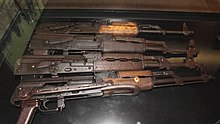
AK-47 copies confiscated from Somali pirates by Finnish mine-layer Pohjanmaa during Operation Atalanta, photographed in Manege Military Museum. The stocks are missing on the top three AKs
Throughout the world, the AK and its variants are commonly used by governments, revolutionaries, terrorists, criminals, and civilians alike. In some countries, such as Somalia, Rwanda, Mozambique, Congo and Tanzania, the prices for Black Market AKs are between $30 and $125 per weapon and prices have fallen in the last few decades due to mass counterfeiting.[152] In Kenya, “an AK-47 fetches five head of cattle (about 10,000 Kenya shillings or 100 U.S. dollars) when offered for barter, but costs almost half that price when cash is paid”.[153] There are places around the world where AK type weapons can be purchased on the Black Market “for as little as $6, or traded for a chicken or a sack of grain”.[154][155][156]
The AK-47 has also spawned a cottage industry of sorts and has been copied and manufactured (one gun at a time) in small shops around the world (see Khyber Pass Copy).[157][158] The estimated numbers of AK-type weapons vary greatly. The Small Arms Survey suggest that “between 70 and 100 million of these weapons have been produced since 1947”.[159] The World Bank estimates that out of the 500 million total firearms available worldwide, 100 million are of the Kalashnikov family, and 75 million are AK-47s.[3]Because AK-type weapons have been made in many countries, often illicitly, it is impossible to know how many really exist.[160]
Cultural influence and impact
— Larry Kahaner, author of AK-47: The Weapon That Changed the Face of War[161]
During the Cold War, the Soviet Union and the People’s Republic of China, as well as United States and other NATO nations supplied arms and technical knowledge to numerous countries and rebel forces around the world. During this time the Western countries used relatively expensive automatic rifles, such as the FN FAL, the HK G3, the M14, and the M16. In contrast, the Russians and Chinese used the AK-47; its low production cost and ease of manufacture allow them to make AKs in vast numbers.
In the pro-communist states, the AK-47 became a symbol of third-world revolution. During the 1980s, the Soviet Union became the principal arms dealer to countries embargoed by Western nations, including Middle Eastern nations such as Iran, Libya, and Syria, which welcomed Soviet Union backing against Israel. After the fall of the Soviet Union, AK-47s were sold both openly and on the black market to any group with cash, including drug cartels and dictatorial states, and more recently they have been seen in the hands of Islamic groups such as Al-Qaeda, ISIL, and the Taliban in Afghanistan and Iraq, and FARC, Ejército de Liberación Nacional guerrillas in Colombia.[161]
In Russia, the Kalashnikov is a tremendous source of national pride.[162] “The family of the inventor of the world’s most famous assault rifle, Mikhail Kalashnikov, has authorized German engineering company MMI to use the well-known Kalashnikov name on a variety of not-so-deadly goods.”[163] In recent years, Kalashnikov Vodka has been marketed with souvenir bottles in the shape of the AK-47 Kalashnikov.[164][165] There are also Kalashnikov watches,[166] umbrellas,[167] and knives.[168][169]
The Kalashnikov Museum (also called the AK-47 museum) opened on 4 November 2004 in Izhevsk, Udmurt Republic. This city is in the Ural Region of Russia. The museum chronicles the biography of General Kalashnikov and documents the invention of the AK-47. The museum complex of Kalashnikov’s small arms, a series of halls, and multimedia exhibitions are devoted to the evolution of the AK-47 assault rifle and attracts 10,000 monthly visitors.[170] Nadezhda Vechtomova, the museum director, stated in an interview that the purpose of the museum is to honor the ingenuity of the inventor and the hard work of the employees and to “separate the weapon as a weapon of murder from the people who are producing it and to tell its history in our country”. On 19 September 2017 a 9 metres (30 ft) monument of Kalashnikov was unveiled in central Moscow. A protester, later detained by police, attempted to unfurl a banner reading “a creator of weapons is a creator of death”.[171]
The proliferation of this weapon is reflected by more than just numbers. The AK-47 is included in the flag of Mozambiqueand its emblem, an acknowledgment that the country gained its independence in large part through the effective use of their AK-47s.[172] It is also found in the coats of arms of East Timor and the revolution era Burkina Faso, as well as in the flags of Hezbollah, Syrian Resistance, FARC-EP, the New People’s Army, TKP/TIKKO and the International Revolutionary People’s Guerrilla Forces.
Some Western countries associate the AK-47 with their enemies; both Cold War era and present-day. For example, Western movies often portray criminals, gang members and terrorists using AK-47s. For these reasons, in the U.S. and Western Europe, the AK-47 is stereotypically regarded as the weapon of choice of insurgents, gangsters and terrorists. Conversely, throughout the developing world, the AK-47 can be positively attributed with revolutionaries against foreign occupation, imperialism, or colonialism.[161]
The AK-47 made an appearance in U.S. popular culture as a recurring focus in the Nicolas Cage film Lord of War (2005). Numerous monologues in the movie focus on the weapon, and its effects on global conflict and the gun runningmarket.[173]
In 2006, the Colombian musician and peace activist César López devised the escopetarra, an AK converted into a guitar. One sold for US$17,000 in a fundraiser held to benefit the victims of anti-personnel mines, while another was exhibited at the United Nations’ Conference on Disarmament.[174]
In Mexico, the AK-47 is known as “Cuerno de Chivo” (literally “Goat’s Horn”) because of its curved magazine design. It is one of the weapons of choice of Mexican drug cartels. It is sometimes mentioned in Mexican folk music lyrics.[175]
See also
- Assault weapon
- Comparison of the AK-47 and M16
- List of Russian inventions
- List of Russian weaponry
- List of assault rifles
- Table of handgun and rifle cartridges
- Overview of gun laws by nation
Notes
 *Lieutenant-General Mikhail Timofeyevich Kalashnikov (Russian: Михаи́л Тимофе́евич Кала́шников; IPA: [kɐˈlaʂnʲɪkəf]; 10 November 1919 – 23 December 2013) was a Russian general, inventor, military engineer, writer and small arms designer. He is most famous for developing the AK-47assault rifle and its improvements, the AKM and AK-74, as well as the PK machine gun and RPK light machine gun.[1]
*Lieutenant-General Mikhail Timofeyevich Kalashnikov (Russian: Михаи́л Тимофе́евич Кала́шников; IPA: [kɐˈlaʂnʲɪkəf]; 10 November 1919 – 23 December 2013) was a Russian general, inventor, military engineer, writer and small arms designer. He is most famous for developing the AK-47assault rifle and its improvements, the AKM and AK-74, as well as the PK machine gun and RPK light machine gun.[1]Kalashnikov was, according to himself, a self-taught tinkerer who combined innate mechanical skills with the study of weaponry to design arms that achieved battlefield ubiquity.[4] Even though Kalashnikov felt sorrow at the weapons’ uncontrolled distribution, he took pride in his inventions and in their reputation for reliability, emphasizing that his rifle is “a weapon of defense” and “not a weapon for offense”.[4]
Contents
[hide]
Early life
Kalashnikov was born in Kurya, Altai Governorate, Russian SFSR,[1] now Altai Krai, Russia, as the seventeenth child of the 19 children[5] of Aleksandra Frolovna Kalashnikova (née Kaverina) and Timofey Aleksandrovich Kalashnikov, who were peasants.[5] In 1930, his father and most of his family were deprived of property and deported to the village of Nizhnyaya Mokhovaya, Tomsk Oblast.[6][7] In his youth, Mikhail suffered from various illnesses and was on the verge of death at age six.[3] He was attracted to all kinds of machinery,[6] but also wrote poetry, dreaming of becoming a poet.[8] He went on to write six books and continued to write poetry all of his life.[7][9] Kalashnikov’s parents were peasants, but, after deportation to Tomsk Oblast, had to combine farming with hunting, and thus Mikhail frequently used his father’s rifle in his teens. Kalashnikov continued hunting into his 90s.[3]
After completing seventh grade, Mikhail, with his stepfather’s permission, left his family and returned to Kurya, hitchhiking for nearly 1,000 km. In Kurya he found a job in mechanics at a tractor station and developed a passion for weaponry. In 1938, he was conscripted into the Red Army. Because of his small size[10] and engineering skills he was assigned as a tank mechanic, and later became a tank commander. While training, he made his first inventions, which concerned not only tanks, but also small weapons, and was personally awarded a wrist watch by Georgy Zhukov.[3]Kalashnikov served on the T-34s of the 24th Tank Regiment, 108th Tank Division[2] stationed in Stryi[3] before the regiment retreated after the Battle of Brody in June 1941. He was wounded in combat in the Battle of Bryansk in October 1941[3]and hospitalised until April 1942.[2] in the last few months of being in hospital, he overheard some fellow soldiers complaining about the Soviet rifles at the time and this is when he came up with the idea of making a new rifle which later became the AK47.[11]
Seeing the drawbacks of the standard infantry weapons at the time, he decided to construct a new rifle for the Soviet military. During this time Kalashnikov began designing a submachine gun.[12] Although his first submachine gun design was not accepted into service, his talent as a designer was noticed.[3] From 1942 onwards Kalashnikov was assigned to the Central Scientific-developmental Firing Range for Rifle Firearms of the Chief Artillery Directorate of the Red Army.[13]
In 1944, he designed a gas-operated carbine for the new 7.62×39mm cartridge. This weapon, influenced by the M1 Garand rifle, lost out to the new Simonovcarbine which would be eventually adopted as the SKS; but it became a basis for his entry in an assault rifle competition in 1946.[14]
His winning entry, the “Mikhtim” (so named by taking the first letters of his name and patronymic, Mikhail Timofeyevich) became the prototype for the development of a family of prototype rifles.[15] This process culminated in 1947, when he designed the AK-47 (standing for Avtomat Kalashnikova model 1947). In 1949, the AK-47 became the standard issue assault rifle of the Soviet Army and went on to become Kalashnikov’s most famous invention.[16] While developing his first assault rifles, Kalashnikov competed with two much more experienced weapon designers, Vasily Degtyaryov and Georgy Shpagin, who both accepted the superiority of the AK-47. Kalashnikov named Alexandr Zaitsev and Vladimir Deikin as his major collaborators during those years.[3]
Later career
From 1949, Mikhail Kalashnikov lived and worked in Izhevsk, Udmurtia. He held a degree of Doctor of Technical Sciences(1971)[1][2] and was a member of 16 academies.[17]
Over the course of his career, he evolved the basic design into a weapons family. The AKM (Russian: Автомат Кала́шникова Модернизированный – Kalashnikov modernized assault rifle) first appeared in 1963, was lighter and cheaper to manufacture owing to the use of a stamped steel receiver (in place of the AK-47’s milled steel receiver), and contained detail improvements such as a re-shaped stock and muzzle compensator. From the AKM he developed a squad automatic weapon variant, known as the RPK (Russian: Ручной пулемет Кала́шникова – Kalashnikov light machine gun).
He also developed the general-purpose PK machine gun (Russian: Пулемет Кала́шникова – Kalashnikov machine gun), which used the more powerful 7.62×54R cartridge of the Mosin–Nagant rifle. It is cartridge belt-fed, not magazine-fed, as it is intended to provide heavy sustained fire from a tripod mount, or be used as a light, bipod-mounted weapon. The common characteristics of all these weapons are simple design, ruggedness and ease of maintenance in all operating conditions.
Approximately 100 million AK-47 assault rifles had been produced by 2009,[9] and about half of them are counterfeit, manufactured at a rate of about a million per year.[12][18] Izhmash, the official manufacturer of AK-47 in Russia, did not patent the weapon until 1997, and in 2006 accounted for only 10% of the world’s production.[8] This arm became famous due to its reliability in the most extreme climatic conditions, functioning perfectly in the desert as in the tundra. It is in official use by the militaries of 55 nations, and has been so influential in military struggle that it has been used on national flags. Prominent examples include the flags of Mozambique and Hezbollah, as well as the East Timorese and Zimbabwean coats of arms.
Kalashnikov himself claimed he was always motivated by service to his country rather than money,[7] and made no direct profit from weapon production.[19] He did however own 30% of a German company Marken Marketing International (MMI) run by his grandson Igor.[20] The company revamps trademarks and produces merchandise carrying the Kalashnikov name, such as vodka,[9] umbrellas and knives.[21][22] One of the items is a knife named for the AK-74.[20]
During a visit to the United States in the early 2000s, Kalashnikov was invited to tour a Virginia holding site for the forthcoming American Wartime Museum. The former tanker Kalashnikov became visibly moved at the sight of his old tank in action, painted with his name in Cyrillic.[23]
Death
After a prolonged illness Kalashnikov was hospitalized on 17 November 2013, in an Udmurtian medical facility in Izhevsk, the capital of Udmurtia and where he lived. He died 23 December 2013, at age 94 from gastric hemorrhage.[24][25][26][27] In January 2014 a letter that Kalashnikov wrote six months before his death to the leader of the Russian Orthodox Church, Patriarch Kirill, was published by the Russian daily newspaper Izvestia.[28] In the letter he stated that he was suffering “spiritual pain” about whether he was responsible for the deaths caused by the weapons he created.[29] Translated from the published letter he states, “I keep having the same unsolved question: if my rifle claimed people’s lives, then can it be that I… a Christian and an Orthodox believer, was to blame for their deaths?”[30][28]
The patriarch wrote back, thanked Kalashnikov, and said that he “was an example of patriotism and a correct attitude toward the country”. Kirill added about the design responsibility for the deaths by the rifle, “the church has a well-defined position when the weapon is defense of the Motherland, the Church supports its creators and the military, which use it.”[28]
He became one of the first people buried in the Federal Military Memorial Cemetery.
Family[edit]
Kalashnikov’s father, Timofey Aleksandrovich Kalashnikov (1883–1930), was a peasant. He completed two grades of parochial school and could read and write. In 1901 he married Aleksandra Frolovna Kaverina (1884–1957), who was illiterate throughout her life. They had 19 children, but only eight survived to adult age; Kalashnikov was born 17th,[16] and was close to death at age six.
In 1930, the government labeled Timofey Aleksandrovich a kulak, confiscated his property, and deported him to Siberia, along with most of the family. The eldest three siblings, daughters Agasha (b. 1905) and Anna and son Victor, were already married by 1930, and remained in Kuriya. After her husband’s death in 1930, Aleksandra Frolovna married Efrem Kosach, a widower who had three children of his own.[3][6]
Mikhail Kalashnikov married twice, the first time to Ekaterina Danilovna Astakhova of Altai Krai. He married the second time to Ekaterina Viktorovna Moiseyeva (1921–1977).[4][31] She was an engineer and did much technical drawing work for her husband. They had four children: daughters Nelli (b. 1942), Elena (b. 1948) and Natalya (1953–1983), and a son Victor (b. 1942).[3][31] Victor also became a prominent small arms designer.
The title to the AK-47 trademark belonged to Mikhail Kalashnikov’s family until 4 April 2016, when the Kalashnikov Concern won a lawsuit to invalidate the registration of the trademark.[32]
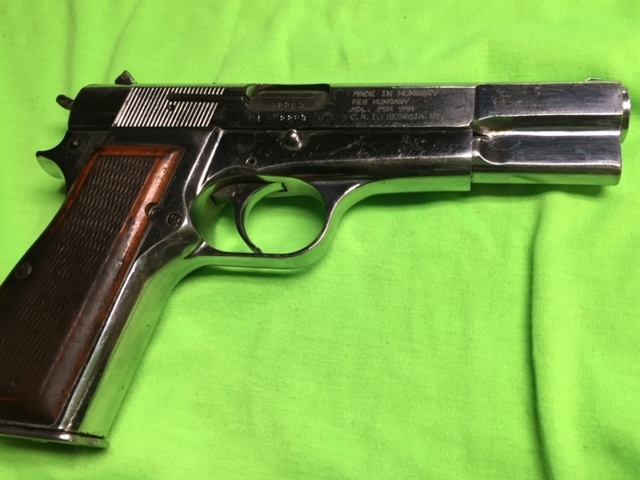
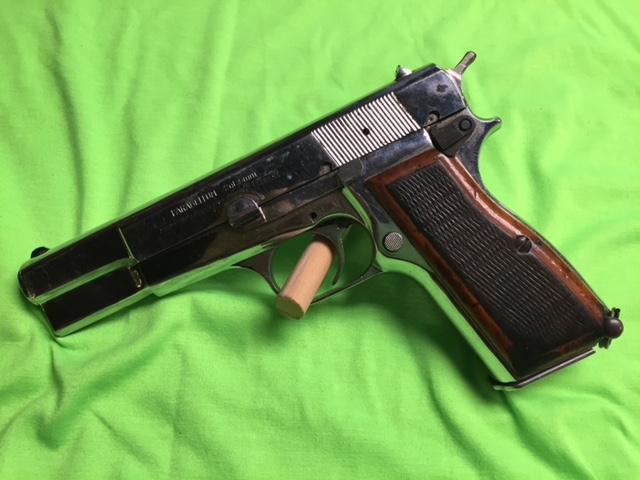
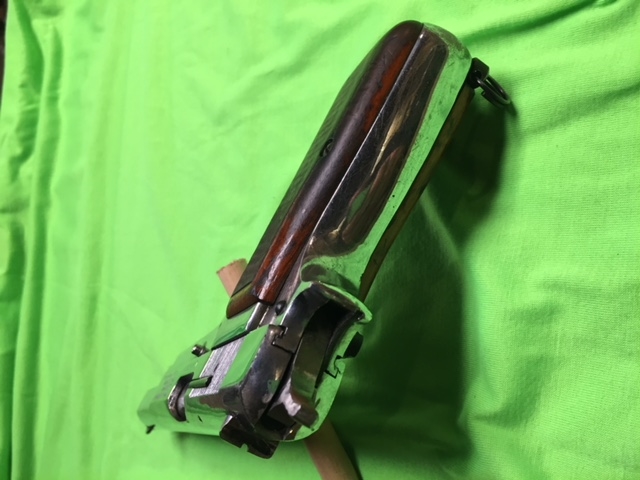
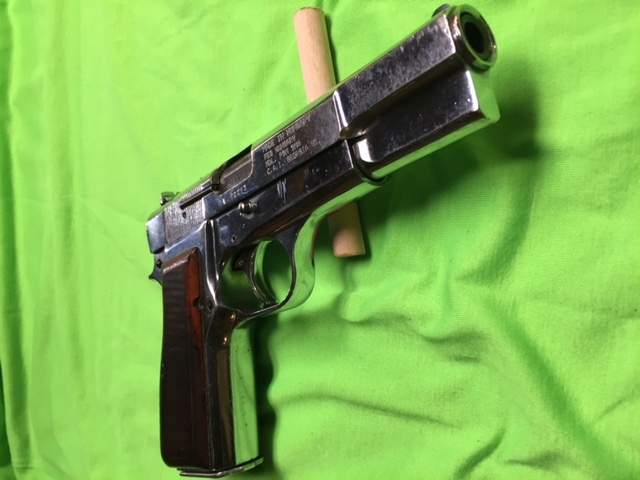
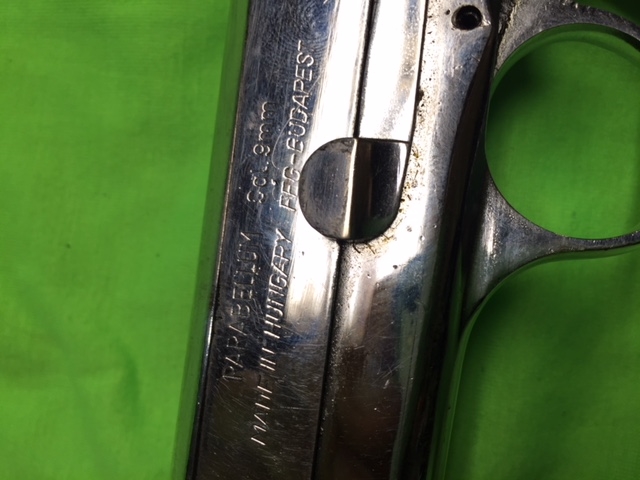
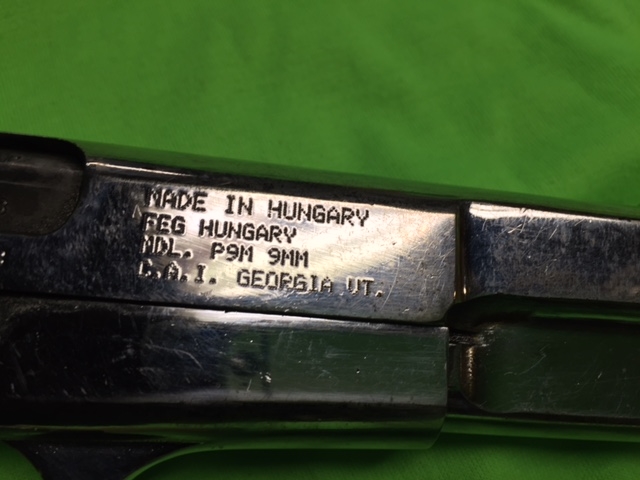

As you have no doubt figured out by now. I am a big fan of the Browning Hi Power pistol.
Also as you will seen so are a lot of other folks. This pistol therefore is a classic example of imitation is the most sincerest form of flattery. This time by the Hungarians.
Enjoy Grumpy



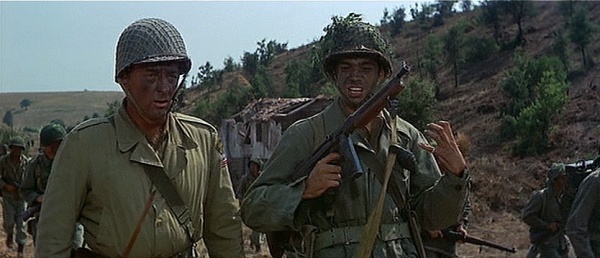
I think that this is one of the better Explanations. Grumpy
Submachine gun- Wiki

General John T. Thompson holding a Thompson M1921

US Navy SEALs armed with Heckler and Koch MP-5 submachine guns.

Artillery Luger P08 pistol with snail-drum magazine and removable stock.

The Bergmann MP 18 was the world’s first practical submachine gun

Suomi M31 submachine with 70-round drum magazine attached, 20- and 50-round box magazines.

PPSh-41 with 71-round drum magazine

Carl Gustav M/45 also known as the “Swedish-K”

Czechoslovak Sa vz. 25

MAT-49 on display

The UZI
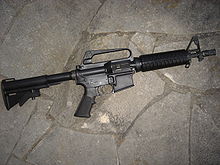
Colt 9mm SMG is virtually identical to the M16 rifle.

The Heckler & Koch UMP45 with a vertical foregrip
A submachine gun (SMG) is a magazine-fed, fully automatic carbine designed to fire pistol cartridges. The term “submachine gun” was coined by John T. Thompson, the inventor of the Thompson submachine gun.[1]
The submachine gun was developed during World War I (1914–1918). At its zenith during World War II (1939–1945), millions of SMGs were made.
After the war, new SMG designs appeared frequently.[2] However, by the 1980s, SMG usage decreased.[2]
Today, submachine guns have been largely replaced by assault rifles,[2] which have a greater effective range and are capable of penetrating the helmets and body armor used by modern infantry.[3]
However, submachine guns are still used by military special forces and police SWAT teams for close quarters battle (CQB) because they are “a pistol-caliber weapon that’s easy to control, and less likely to over-penetrate the target.”[3]
History in the 20th Century
World War I
In the early 20th century, experimental machine pistols were made by converting pistols such as the Luger P-08 and Mauser C96 from semiautomatic to fully automatic operation and adding detachable stocks.
Carbine-type automatic weapons firing pistol rounds were developed during the latter stages of World War I by Italy, Germany and the United States. Their improved firepower and portability offered an advantage in trench warfare.[4]
In 1915, the Italians introduced the Villar-Perosa aircraft machine gun. It fired pistol-caliber 9mm Glisenti ammunition, but was not a true submachine gun, as it was originally designed as a mounted weapon.
This odd design was then modified into the Beretta OVP carbine-type submachine gun, which then evolved into the Beretta Model 1918 after the end of World War I.
Both the Beretta OVP and the Model 1918 had a traditional wooden stock, a 25-round top-fed box magazine, and had a cyclic rate of fire of 900 rounds per minute.
The Germans initially used heavier versions of the P08 pistol equipped with a larger-capacity snail-drum magazine and a longer barrel.
By 1918, Bergmann Waffenfabrik had developed the MP 18, the first practical submachine gun. This weapon fired the 9×19mm Parabellum round and used the same 32-round snail-drum magazine as the Luger P-08. The MP 18 was used in significant numbers by
German stormtroopers employing infiltration tactics, achieving some notable successes in the final year of the war. However, these were not enough to prevent Germany’s collapse in November 1918.
After World War I, the MP 18 would evolve into the MP28/II SMG, which incorporated a simple 32-round box magazine, a semi & full auto selector, and other minor improvements.[5]
The Thompson submachine gun had been in development at approximately the same time as the Bergmann and the Beretta.
However, the war ended before prototypes could be shipped to Europe.[6] Although it had missed its chance to be the first purpose-designed submachine gun to enter service, it became the basis for later weapons and had the longest active service life of the three.
In the interwar period the “Tommy Gun” or “Chicago Typewriter” became notorious in the U.S. as a gangster’s weapon; the image of pinstripe-suited James Cagney types wielding drum-magazine Thompson’s caused some military planners to shun the weapon.
However, the FBI and other U.S. police forces themselves showed no reluctance to use and prominently display these weapons. Eventually, the submachine gun was gradually accepted by many military organizations, especially as World War II loomed, with many countries developing their own designs.
World War II
The Italians were among the first to develop submachine guns during World War I. However, they were slow to produce them during World War II.
The Beretta Model 1938 was not available in large numbers until 1943. The 38 was made in a successive series of improved and simplified models all sharing the same basic layout.
The Beretta has two triggers, the front for semi-auto and rear for full-auto. Most models use standard wooden stocks, although some models were fitted with an MP 40-style under-folding stock and are commonly mistaken for the German SMG.
The 38 series was extremely robust and proved very popular with both Axis forces and Allied troops (who used captured Berettas).[7]
It is considered the most successful and effective Italian small arm of World War II. The 38 series is the longest serving of the world’s SMGs, as later models can still be seen in the hands of Italian military and police forces.
In 1939, the Germans introduced the 9 mm Parabellum MP38 during the invasion of Poland.
However, the MP38 production was still just starting and only a few thousand were in service at the time. It proved to be far more practical and effective in close quarters combat than the standard-issue German Kar 98K bolt-action rifle.
From it, the nearly identical MP40 was developed and made in large numbers; about a million were made during World War II.
The MP40 was lighter than the MP38. It also used more stamped parts, making it faster and cheaper to produce.[8]
The MP38 and MP40 were the first SMGs to use plastic furniture and a practical folding stock.[8] They would set the fashion for all future SMG designs.[8]
During the Winter War, the badly outnumbered Finnish used the Suomi KP/-31 in large numbers against the Russians with devastating effect.[9] Finnish ski troops became known for appearing out of the woods on one side of a road, raking Soviet columns with SMG fire and disappearing back into the woods on the other side.
During the Continuation War, the Finnish Sissi patrols would often equip every soldier with KP/-31s. The Suomi fired 9 mm Parabellum ammo from a 71-round drum magazine (although often loaded with 74 rounds).
“This SMG showed to the world the importance of the submachine gun to the modern warfare”,[9]prompting the development, adoption and mass production of submachine guns by most of the World’s armies.
The Suomi was used in combat until the end of the Lapland war, was widely exported[9] and remained in service to the late 1970s.
In 1940, the Russians introduced the 7.62×25mm PPD-40 and later the more easily manufactured PPSh-41 in response to their experience during the Winter War against Finland.
The PPSh’s 71-round drum magazine is a copy of the Suomi’s. Later in the war they developed the even more readily mass-produced PPS submachine gun.
The USSR would go on to make over 6 million PPSh-41s and 2 million PPSs by the end of World War II. Thus, the Soviet Union could field huge numbers of submachine guns against the Wehrmacht, with whole infantry battalions being armed with little else.
Even in the hands of conscripted soldiers with minimal training, the volume of fire produced by massed submachine guns could be overwhelming.
In 1941, Britain adopted the 9 mm Parabellum Lanchester submachine gun. Following the Dunkirk evacuation, and with no time for the usual research and development for a new weapon, it was decided to make a direct copy of the German MP 28.
However this gun, the Lanchester, proved to be difficult and expensive to manufacture. Shortly thereafter, the much simpler, cheaper and faster to make STEN submachine gun was developed.
Over 4 million STEN Guns were made during World War II. The STEN gun was so cheap and easy to make that Germany started manufacturing their own copy (the MP 3008) towards the end of World War II.
After the war, the British replaced the STEN with the Sterling submachine gun. Britain also used many M1928 Thompson submachine guns during World War II.
The United States and its allies used the Thompson submachine gun, especially the simplified M1. However, the Thompson was still expensive and slow to produce. Therefore, the U.S. developed the M3 submachine gun or “Grease Gun” in 1942, followed by the improved M3A1 in 1944.
While the M3 was no more effective than the Tommy Gun, it was made primarily of stamped parts and welded together, and so, it could be produced much faster and at fraction of the cost of a Thompson.
It could be configured to fire either .45 ACP or 9mm Luger ammunition. The M3A1 was among the longest serving submachine guns designs, being produced into the 1960s and serving in US forces into the 1980s.
After World War II
After World War II, “new submachine gun designs appeared almost every week to replace the admittedly rough and ready designs which had appeared during the war.
Some (the better ones) survived, most rarely got past the glossy brochure stage.”[10] Most of these survivors were cheaper, easier and faster to make than their predecessors. As such, they were widely distributed.
In 1945, Sweden introduced the 9mm Parabellum Carl Gustav M/45 with a design borrowing from and improving on many design elements of earlier submachine-gun designs.
It has a tubular stamped steel receiver with a side folding stock. The M/45 was widely exported, and especially popular with CIA operatives and U.S. Special Forces during the Vietnam War.
In U.S. service it was known as the “Swedish-K”. In 1966, the Swedish government blocked the sale of firearms to the United States because it opposed the Vietnam War.
As a result, in the following year Smith & Wesson began to manufacture an M/45 clone called the M76.
In 1946, Denmark introduced the Madsen M-46, and in 1950, an improved model the Madsen M-50. These 9mm Parabellum stamped steel SMGs featured a unique clamshell type design, a side folding stock and a grip-safety on the magazine housing.
The Madsen was widely exported and especially popular in Latin America, with variants made by several countries.
In 1948, Czechoslovakia introduced the Sa vz. 23 series. This 9mm Parabellum SMG introduced several innovations: a progressive trigger for selecting between semi-automatic and full auto fire, a telescoping bolt that extends forward wrapping around the barrel and a vertical handgrip housing the magazine and trigger mechanism.
The vz. 23 series was widely exported and especially popular in Africa and the Middle East with variants made by several countries. The vz. 23 inspired the development of the Uzi submachine gun.[11]
In 1949, France introduced the MAT-49 to replace the hodgepodge of French, American, British, German and Italian SMGs in French service after World War II.
The 9mm Parabellum MAT-49 is an inexpensive stamped steel SMG with a telescoping wire stock, a pronounced folding magazine housing and a grip safety.
This “wildebeest like design” proved to be an extremely reliable and effective SMG, and was used by the French well into the 1980s. It was also widely exported to Africa, Asia and the Middle East.
1950s
In 1954, Israel introduced a 9mm Parabellum open-bolt, blowback-operated submachine gun called the Uzi (after its designer Uziel Gal).
The Uzi was one of the first weapons to use a telescoping bolt design with the magazine housed in the pistol grip for a shorter weapon.
The Uzi has become one of the most popular submachine guns in the world, with over 10 million units sold,[12] more than any other submachine gun.[13]
In 1959, Beretta introduced the Model 12. This 9mm Parabellum submachine gun was a complete break with previous Beretta designs.[14]
It is a small, compact, very well made SMG and among the first to use telescoping bolt design.[14] The M12 was designed for mass production and was made largely of stamped steel and welded together.[14]
It is identified by its tubular shape receiver, double pistol grips, a side folding stock and the magazine housed in front of the trigger guard. The M12 uses the same magazines as the Model 38 series.
1960s
In the 1960s, Heckler & Koch developed the 9mm Parabellum MP5 submachine gun. The MP5 is based on the G3 rifle and uses the same closed-bolt roller-delayed blowback operation system.
This makes the MP5 more accurate than open-bolt SMGs, such as the UZI. The MP5 is also one of the most widely used submachine guns in the world,[15] having been adopted by 40 nations and numerous military, law enforcement, intelligence, and security organizations.[16]
1970s
In the 1970s, extremely compact submachine guns, such as the .45ACP Mac-10 and .380 ACP Mac-11, were developed to be used with silencers or suppressors.[17]
While these SMGs received enormous publicity, and were prominently displayed in films and television, they were not widely adopted by military or police forces.[17]
These smaller weapons led other manufacturers to develop their own compact SMGs, such as the Micro-UZI and the H&K MP5K.
1980s
By the 1980s, the demand for new submachine guns was very low and could be easily met by existing makers with existing designs.[2]
However, several manufacturers began designing Submachine guns based on their existing assault rifle patterns. These new SMGs offered a high degree of parts commonality with parent weapons, thereby easing logistical concerns.
In 1987, Colt introduced the Colt 9mm SMG based on the M16 rifle.[18] The Colt SMG is a closed bolt, blowback operated SMG and the overall aesthetics are identical to most M16 type rifles.
The magazine well is modified using a special adapter to allow the use of smaller 9mm magazines. The magazines themselves are a copy of the Israeli UZI SMG magazine, modified to fit the Colt and lock the bolt back after the last shot. The Colt is widely used by U.S. police forces and the USMC.
1990s
In 1998, H&K introduced the last widely distributed SMG, the UMP “Universal Machine Pistol”.[20] The UMP is a 9mm, .40 S&W, or .45 ACP, closed-bolt blowback-operated SMG, based on the H&K G36 assault rifle.[21][22]
It features a predominantly polymer construction and was designed to be a lighter and cheaper alternative to the MP5.[21][23] The UMP has a side-folding stock and is available with four different trigger group configurations.[24] It was also designed to use a wide range of Picatinny rail mounted accessories [21][22]
21st Century
2000s
In 2004, Izhmash introduced the Vityaz-SN a 9mm Parabellum, closed bolt straight blowback operated submachine gun.
It is based on the AK-74 rifle and offers a high degree of parts commonality with the AK-74.[25] It is the standard submachine gun for all branches of Russian military and police forces.[26][27]
2010s
In the 2010s, assault rifles have replaced submachine guns in most roles.[2] Factors such as the increasing use of body armor and logistical concerns have combined to limit the appeal of submachine guns.
However, SMGs are still used by police (especially SWAT teams) for dealing with heavily armed suspects and military special forces units for close quarters combat, due to their reduced size, recoil and muzzle blast.
Submachine guns also lend themselves to the use of suppressors, particularly when loaded with subsonic ammunition. Variants of the Sterling and Heckler & Koch MP5 have been manufactured with integral suppressors.
Personal defense weapons

An MP7A1 with a 20-round magazine, and a reflex sight
Developed during the late 1980s, the personal defense weapon (PDW) is touted as a further evolution of the submachine gun.
The PDW was created in response to a NATO request for a replacement for 9×19mm Parabellum submachine guns. The PDW is a compact automatic weapon that can defeat enemy body armor and which can be used conveniently by non-combatant and support troops, and as a close quarters battle weapon for special forces and counter-terrorist groups.[28][29]
Introduced in 1991, the FN P90 features a bullpup design with a futuristic appearance. It has a 50-round magazine housed horizontally above the barrel, an integrated reflex sight and fully ambidextrous controls.[30]
A simple blowback automatic weapon, it was designed to fire the FN 5.7×28mm cartridge which can penetrate soft body armor.[28][29] The P90 was designed to have a length no greater than a man’s shoulder width, to allow it to be easily carried and maneuvered in tight spaces, such as the inside of an armored vehicle.[30]
Introduced in 2001, the Heckler & Koch MP7 is a direct rival to the FN P90. It is a more conventional-looking design. The MP7 uses a short-stroke piston gas system as used on H&K’s G36 and HK416 assault rifles, in place of a blowback system traditionally seen on submachine guns.[31]
The MP7 uses 20-, 30- and 40-round magazines and fires 4.6×30mm ammunition which can penetrate soft body armor. Due to the heavy use of polymers in its construction, the MP7 is much lighter than older SMG designs, being only 1.2 kg (2.65 lb) with 20-round empty magazine.
Name
There are some inconsistencies in the classification of submachine guns.[32] British Commonwealth sources often refer to SMGs as “machine carbines”.[32][33]
Other sources refer to SMGs as “machine pistols” because they fire pistol-caliber ammunition, for example, the MP-40 and MP5, where “MP” stands for Maschinenpistole (“Submachine gun” in German, but cognate with the English term “Machine pistol”).[34]
However, the term “machine pistol” is also used to describe a handgun-style firearm capable of fully automatic or burst fire,[35] such as the Stechkin, Beretta 93R and the H&K VP70.
Firearms like the FN P90 and H&K MP7 are also referred to as Personal Defense Weapons because the small-caliber, high-velocity ammunition is claimed to offer superior performance to conventional pistol ammunition.[32]
In addition, some compact assault rifles, such as the Colt XM177, HK53 and AKS-74U, have been historically referred to as submachine guns as they served in the latter’s role.[36]
See also
- Assault rifle
- Firearm action
- List of submachine guns
- Machine gun
- Machine pistol
- Overview of gun laws by nation
- Personal defense weapon
- Semi-automatic pistol
- Sputter Gun
- Submachine gun competition
References
- Jump up^ “The Thompson submachine gun: shooting a 20th century icon. – Free Online Library”.
- ^ Jump up to:a b c d e Military Small Arms Of The 20th Century. Ian Hogg & John Weeks. Krause Publications. 2000. p93
- ^ Jump up to:a b http://www.defensereview.com/submachine-guns-smgs-outpaced-by-today%E2%80%99s-modern-short-barreled-rifles-sbrssub-carbines-or-still-a-viable-tool-for-close-quarters-battleclose-quarters-combat-cqbcqc/ Defense Review. Submachine Guns (SMG’s): Outpaced by Today’s Modern Short-Barreled Rifles (SBR’s)/Sub-Carbines, or Still a Viable Tool for Close Quarters Battle/Close Quarters Combat (CQB/CQC)? By David Crane. December 11, 2011
- Jump up^ Curley, Robert, ed. (2009). The Britannica Guide to Inventions That Changed the Modern World (First ed.). The Rosen Publishing Group. pp. 291–292. ISBN 1-61530-064-3. Retrieved 2011-05-19.
- Jump up^ Military Small Arms of the 20th Century. 7th Edition. by Ian V. Hogg & John S. Weeks. Krause Publications. 2000. pages 116
- Jump up^ Frank Iannamico, American Thunder: The Military Thompson Submachine Gun 1928, 1928A1, M1, M1A1, Moose Lake Publishing, 2000.
- Jump up^ Dunlap, Roy F., Ordnance Went Up Front, Samworth Press, (1948), p. 58
- ^ Jump up to:a b c Military Small Arms of the 20th Century. 7th Edition. by Ian V. Hogg & John S. Weeks. Krause Publications. 2000. pages 118-120
- ^ Jump up to:a b c armies.http://world.guns.ru/smg/fi/suomi-m31-e.html
- Jump up^ Military Small Arms of the 20th Century. 7th Edition. by Ian V. Hogg & John S. Weeks. Krause Publications. 2000. pages 93-94
- Jump up^ Hogg, Ian V. (1979). Guns and How They Work. New York: Everest House. p. 157. ISBN 0-89696-023-4.
- Jump up^ McManners, Hugh (2003). Ultimate Special Forces. New York: DK Publishing. p. 157. ISBN 0-7894-9973-8. OCLC 53221575. Retrieved 6 January 2011.
- Jump up^ Hackathorn, Ken (1995). “Using the Uzi”. Fighting Firearms. Soldier of Fortune. 3 (1): 18–23.
- ^ Jump up to:a b c Military Small Arms of the 20th Century. 7th Edition. by Ian V. Hogg & John S. Weeks. Krause Publications. 2000. pages 138-139
- Jump up^ Hogg, Ian (2002). Jane’s Guns Recognition Guide. Jane’s Information Group. ISBN 0-00-712760-X.
- Jump up^ Tilstra, Russell C. (2012). Small Arms for Urban Combat. US: McFarland. p. 42. ISBN 978-0-7864-6523-1.
- ^ Jump up to:a b Military Small Arms of the 20th Century. 7th Edition. by Ian V. Hogg & John S. Weeks. Krause Publications. 2000. page 166
- Jump up^ “Archived copy”. Archived from the original on 2003-05-18. Retrieved 2016-11-07.
- Jump up^ Military Small Arms Of The 20th Century. Ian Hogg & John Weeks. Krause Publications. 2000. p167
- Jump up^ “Heckler & Koch – Group Website”. Heckler-koch.com. Retrieved 2009-06-26.
- ^ Jump up to:a b c Cutshaw, Charles Q (2011). Tactical Small Arms of the 21st Century: A Complete Guide to Small Arms From Around the World. Iola, Wisconsin: Gun Digest Books. p. 156. ISBN 978-1-4402-2709-7. Retrieved 8 August 2013.
- ^ Jump up to:a b Jane’s Guns Recognition Guide. by Ian Hogg & Terry Gander. HaperCollins Publishers. 2005. page 192
- Jump up^ Dockery, Kevin (2007). Future Weapons. New York: Penguin Group US. pp. 383–385. ISBN 978-1-101-20618-8. Retrieved 8 August 2013.
- Jump up^ https://books.google.com/books?id=4W-iAgAAQBAJ&pg=PT2&dq=Submachine+Guns+and+Assault+Rifles+%7C+Military-Today.com&hl=en&sa=X&ved=0CCcQ6AEwAGoVChMI14yq7rXcxgIVzjWICh0RpQZV#v=onepage&q=Submachine%20Guns%20and%20Assault%20Rifles%20%7C%20Military-Today.com&f=true Submachine Guns and Assault Rifles | Military-Today.com. Andrius Genys, Jan 1, 2010 – Antiques & Collectibles – 62 pages
- Jump up^ https://web.archive.org/web/20111109005400/http://www.izhmash.ru/eng/product/vityaz.shtml Izhmash product page Vityaz SMG
- Jump up^ “New guns for Russia’s cops – so what? – In Moscow’s Shadows”. In Moscow’s Shadows. Retrieved 7 October 2014.
- Jump up^ “Исторические сведения ПП-19-01 “Витязь”/”Витязь-СН” – пистолет-пулемёт”.
- ^ Jump up to:a b Miller, David (2001). The Illustrated Directory of 20th Century Guns. London: Salamander Books Ltd. ISBN 9781840652451.
- ^ Jump up to:a b Oliver, David (2007). “In the Line of Fire”. Global Defence Review. Archived from the original on October 16, 2006. Retrieved October 19, 2009.
- ^ Jump up to:a b Kevin, Dockery (2007). Future Weapons. New York: Berkley Trade. ISBN 9780425217504.
- Jump up^ Cutshaw, Charles Q. (2003). “Heckler & Koch’s cutting-edge compacts G36C and MP7 PDW: when less really is more”. Guns Magazine. Archived from the original on 2012-07-08.
- ^ Jump up to:a b c Military Small Arms of the 20th Century. 7th Edition. by Ian V. Hogg & John S. Weeks. Krause Publications. 2000. pages 93-94.
- Jump up^ Sten Machine Carbine, by Peter Laidler & R Blake Stevens, Collector Grade Publications, Canada; 1ST edition (December 2000)
- Jump up^ Military Small Arms of the 20th Century. 7th Edition. by Ian V. Hogg & John S. Weeks. Krause Publications. 2000. pages 93-94 & 116-125.
- Jump up^ James Smyth Wallace. Chemical Analysis of Firearms, Ammunition, and Gunshot Residue. CRC Press. 2008. p. xxiii
- Jump up^ Military Small Arms of the 20th Century. 7th Edition. by Ian V. Hogg & John S. Weeks. Krause Publications. 2000. pages 125 & 166-167.
My Grandfather owned a Nursery in Rural Northern San Diego county.
Where I was allowed to shoot squirrels with his Stevens 410 back in the 1970’s.
For me that gun was a great introduction to hunting & gun safety. I am just amazed that they trusted me enough back then!
